NCERT Exemplar for Class 9 Chapter 7 Maths - Triangles
Students can avail Free PDF download of NCERT Exemplar for Class 9 Maths Chapter 7 - Triangles solved by expert Maths teachers on Vedantu as per NCERT (CBSE) Book guidelines. Chapter 7 - Triangles exercise questions with solutions to help you revise the complete syllabus and score more marks in your examinations.
Triangles are one of the most intriguing and simple chapters of Class 9 Mathematics. In this part, the students will gain proficiency with the essential ideas of triangles like compatibility of triangles, models for congruence of triangles like Side Angle Side, Angle Side Angle, Angle Side. To get these ideas perceived we are giving here model solutions, which students can likewise use as a source of perspective while tackling NCERT Book practice questions.
NCERT Exemplar Class 9 Maths Solutions for Chapter 7 will give you all the information about triangles. The activities cover questions on various subjects like congruent figures, triangles, their types, some models for the congruence of triangles, and so forth. One of the vital ideas of this part is the theorems identified with inequalities of triangles.
Access NCERT Exemplar Solutions for Class 9 Mathematics Chapter 7 - Triangles
Sample Question 1: If

(A)
(B)
(C)
(D)
Ans: Correct option - A
Given,
We know that:
Two triangles are said to be congruent if pairs of their corresponding sides and their corresponding angles are equal.
Hence,
Therefore,
EXERCISE 7.1
1. Which of the following is not a criterion for congruence of triangles?
A. SAS
B. ASA
C. SSA
D. SSS
Ans: Correct option - C
A. SAS: If two pairs of corresponding sides of two triangles are equal in length, and the corresponding included angles are equal in measurement, then the triangles are congruent.
B. ASA: If two pairs of corresponding angles of two triangles are equal in measurement, and the corresponding included sides are equal in length, then the triangles are congruent.
C. SSA: The SSA condition (Side-Side-Angle) which specifies two sides and a non-included angle (also known as ASS, or Angle-Side-Side) do not by itself prove congruence.
D. SSS: If three pairs of corresponding sides of two triangles are equal in length, then the triangles are congruent.
2. If

A.
B.
C.
D.
Ans: Correct option - B
Given:

Here, the three pairs of corresponding sides of two triangles are equal in length.
Apply the SSS rule of congruence, we have:
3. In

A.
B.
C.
D.
Ans: Correct option - B
Given:

Since,
4. In
A.
B.
C.
D.
Ans: Correct option - C
The angles opposite to the equal side are equal.
let
Now by angle sum property, we have:
Therefore,
5. In

Then the length of
A. 4cm
B. 5cm
C. 2cm
D. 2.5cm
Ans: Correct option - A

Since,
6.
Then,
A. BD = CD
B. BA > BD
C. BD > BA
D. CD > CA
Ans: Correct option - B

Given,
The bisector divides a given angle into two angles with equal measures.
In
7. It is given that
Then which of the following is true?
A.
B.
C.
D.
Ans: Correct option - B

It is given that
Two triangles are congruent if their corresponding sides are equal in length and their corresponding angles are equal in size.
In the first option,
In the second option,
In the third and the fourth options, the length of
8. Two sides of a triangle are of lengths 5 cm and 1.5 cm. The length of the third side of the triangle cannot be
A. 3.6 cm
B. 4.1 cm
C. 3.8 cm
D. 3.4 cm
Ans: Correct option - D
Two sides of a triangle are of lengths 5 cm and 1.5 cm.
In a triangle, the difference between two sides should be less than the third side.
In a triangle, the difference between two sides should be less than the third side.
Hence, option D is correct
9. In
A. QR > PR
B. PQ > PR
C. PQ < PR
D. QR < PR
Ans: Correct option - B
We have:
In
We know that:
The sides opposite greater angles are greater.
Hence,
10. In triangles

A. isosceles but not congruent
B. isosceles and congruent
C. congruent but not isosceles
D. neither congruent nor isosceles
Ans: Correct option - A

In
Also, given,
Thus,
But,
Hence,
Thus, both the triangles are isosceles but not congruent.
11. In triangles

A. BC = EF
B. AC = DE
C. AC = EF
D. BC = DE
Ans: Correct option - B

In triangles
SAS axiom:
If one angle between two adjacent sides of a triangle is similar to angle between two sides of another triangle then two triangles are congruent.
The two triangles
Sample Question 1: In the two triangles
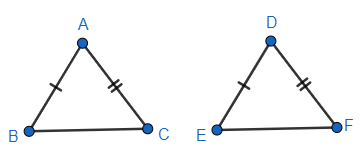
Ans: In the two triangles

By SAS criterion of congruence, we have:
If one angle between two adjacent sides of a triangle is similar to angle between two sides of another triangle then two triangles are congruent.
The required two angles are
Sample Question 2: In triangles ABC and DEF
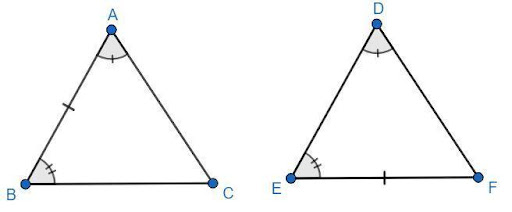
Ans: In triangles ABC and DEF
Here,
Hence, the two triangles ABC and DEF will not be congruent.
EXERCISE 7.2
1. In triangles
Ans: In triangles

The corresponding sides needs to be equal for the triangles to be congruent.
Therefore,
2. In triangles
Ans: In triangles

We know that:
The two triangles are congruent if the corresponding side that touches the same two angle pairs is equal in the given pair of triangles.
Here,
Therefore,
3. “If two sides and an angle of one triangle are equal to two sides and an angle of Another triangle, then the two triangles must be congruent.” Is the statement true? Why?
Ans: The given statement is “If two sides and an angle of one triangle are equal to two sides and an angle of another triangle, then the two triangles must be congruent.”
We know that:
If two sides and the included angle of one triangle is equal to corresponding two sides and the included angle of another triangle then the two triangles must be congruent.
Hence, the given statement is false.
4. “If two angles and a side of one triangle are equal to two angles and a side of another triangle, then the two triangles must be congruent.” Is the statement true? Why?
Ans: The statement is “If two angles and a side of one triangle are equal to two angles and a side of another triangle, then the two triangles must be congruent.”
We know that:
If two angles and the corresponding side of one triangle are equal to the two included angles and the corresponding side of another triangle then the two triangles must be congruent.
The given statement is false.
5. Is it possible to construct a triangle with lengths of its sides as
Ans: Given 3 sides are
To construct the triangle of given sides, we need to check property of triangle “The sum of any two sides of a triangle is always greater than the third side" is satisfied by the lengths of all the three sides.
Here,
Hence, it is not possible to construct a triangle with the given lengths
6. It is given that
Ans: It is given that

We know that:
The two triangles are congruent, if the sides and angles of one triangle are equal to the corresponding side and angles of other triangle.
For
We have,
Hence, it is not true to say that
7. If
Ans:

8. In
Ans: In

By Angle sum property of triangle, we have:
Its opposite side
We know that, the side opposite greatest angle is longest.
The side
9.

Ans:
The median AD of a triangle
In
In
On adding above inequalities,
Hence, the statement “
10.

Ans:
In
The sum of the two sides of a triangle is always greater that the third side.
In
The sum of the two sides of a triangle is always greater that the third side.
Now, adding equation (1) and (2),
Hence, the perimeter of
11. Is it possible to construct a triangle with lengths of its sides as
Ans: Given sides,
To construct the triangle of given sides, we need to check property of triangle “The sum of any two sides of a triangle is always greater than the third side" is satisfied by the lengths of all the three sides.
Here,
The sum of two sides is less than the third side. Hence, it is not possible to construct a triangle with lengths of its sides as
12. Is it possible to construct a triangle with lengths of its sides as
Ans: Given sides,
To construct the triangle of given sides, we need to check property of triangle “The sum of any two sides of a triangle is always greater than the third side" is satisfied by the lengths of all the three sides.
Here,
The sum of two sides is less than the third side.
Hence, it is possible to construct a triangle with lengths of its sides as
Sample Question 1: In Fig

Prove that
Ans: In
and
Therefore
Sample Question 2: In Fig., two lines

Ans: The two lines
We know that:
If a transversal intersects two parallel lines, then alternate interior angles are equal and conversely.
Therefore,
and
Also,
So,
Therefore,
Sample Question 3: In Fig,

Ans:
Therefore
Therefore
EXERCISE 7.3
1. ABC is an isosceles triangle with AB = AC and BD and CE are its two medians. Show that

Ans: Given:
Also,
Hence,
In
By SAS axiom, we have:
2. In Fig.7.4, D and E are points on side
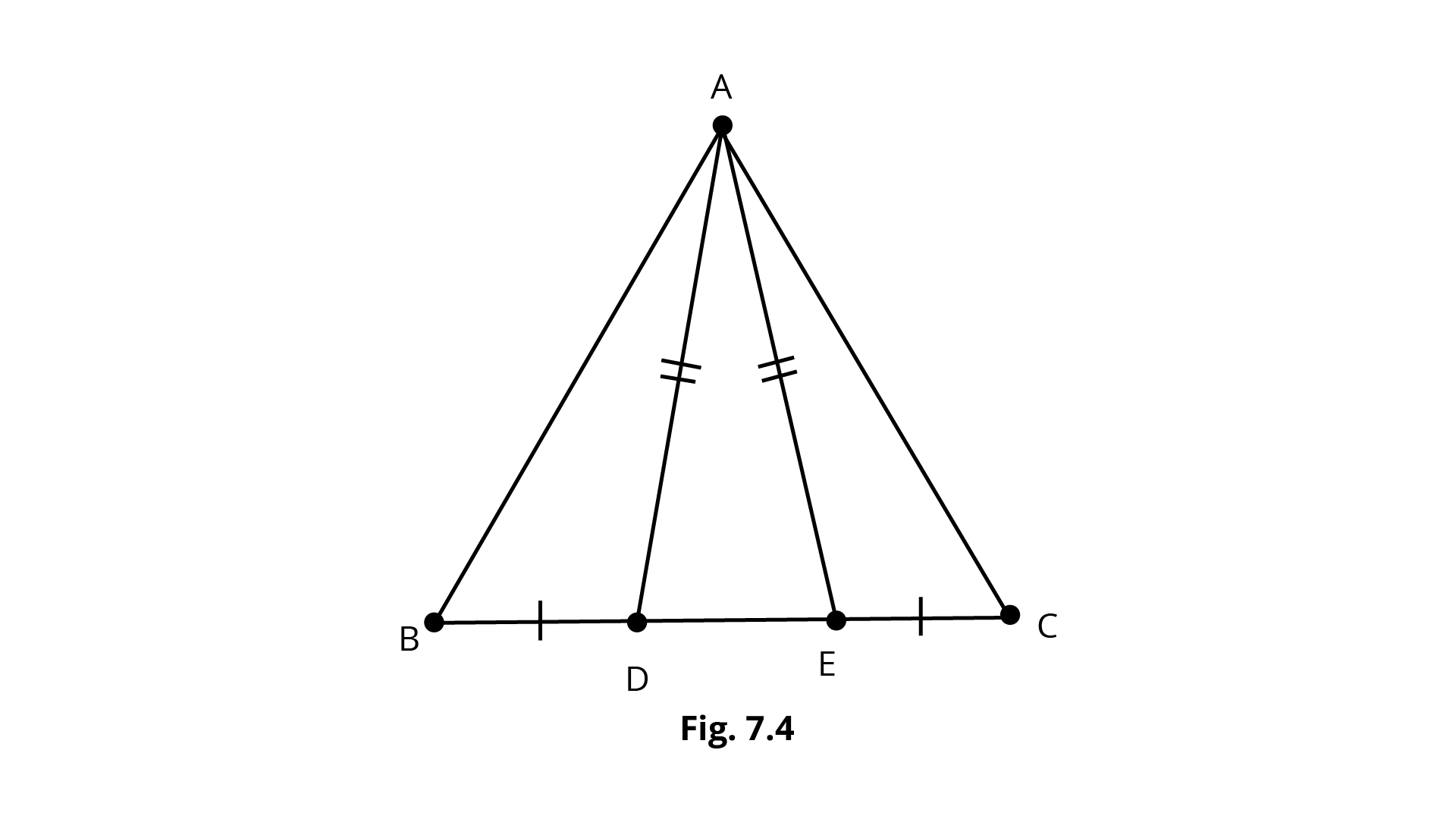
Ans: According to the question,
In
In
Since opposite angles to equal sides are equal,
We have,
Now,
Also,
From equation (2) and (3)
Now, In
Hence,
3.
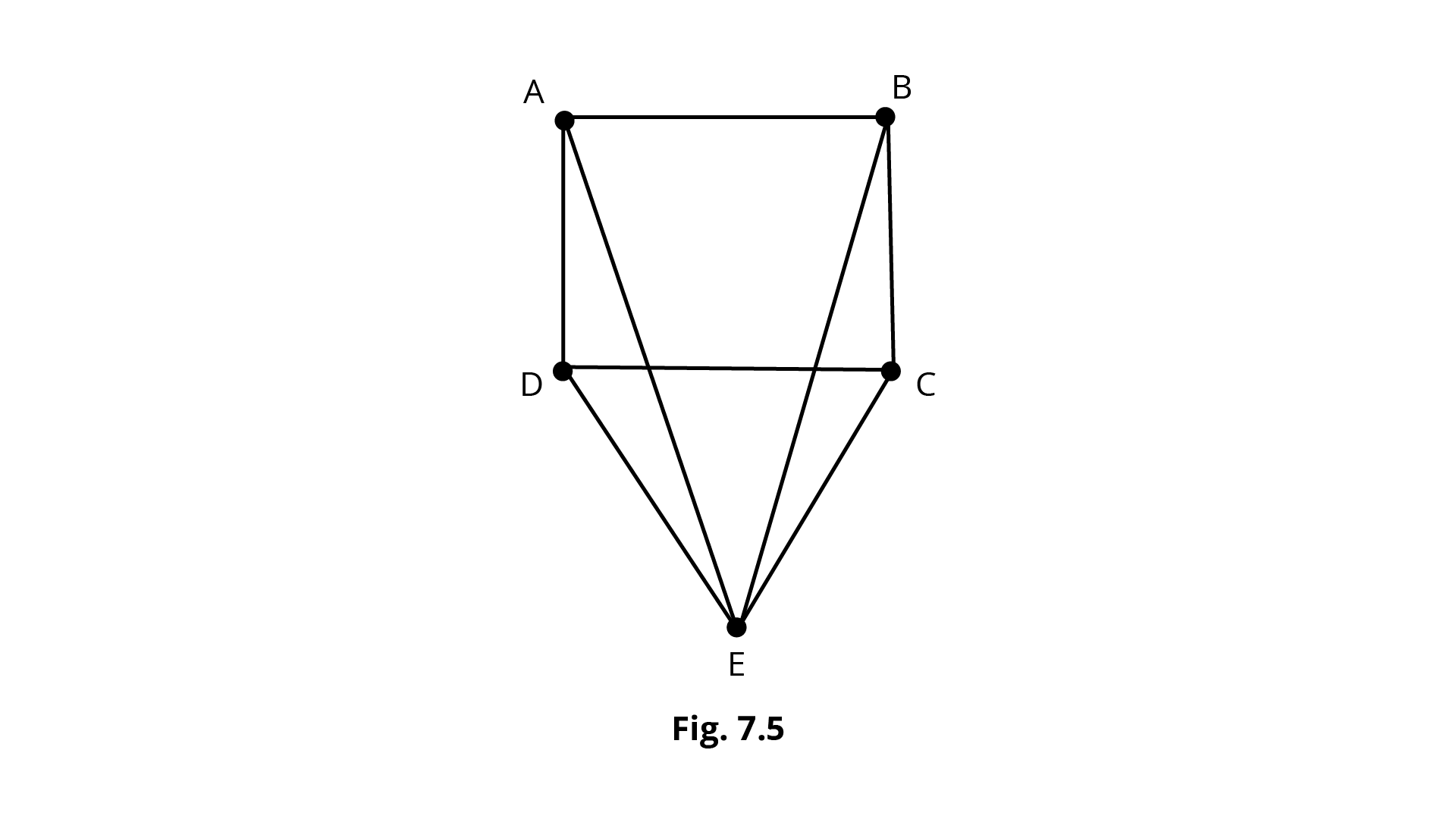
Ans: Given
So
Now in
So
In
And,
Hence from SAS criterion of congruence
4. In Fig.7.6,
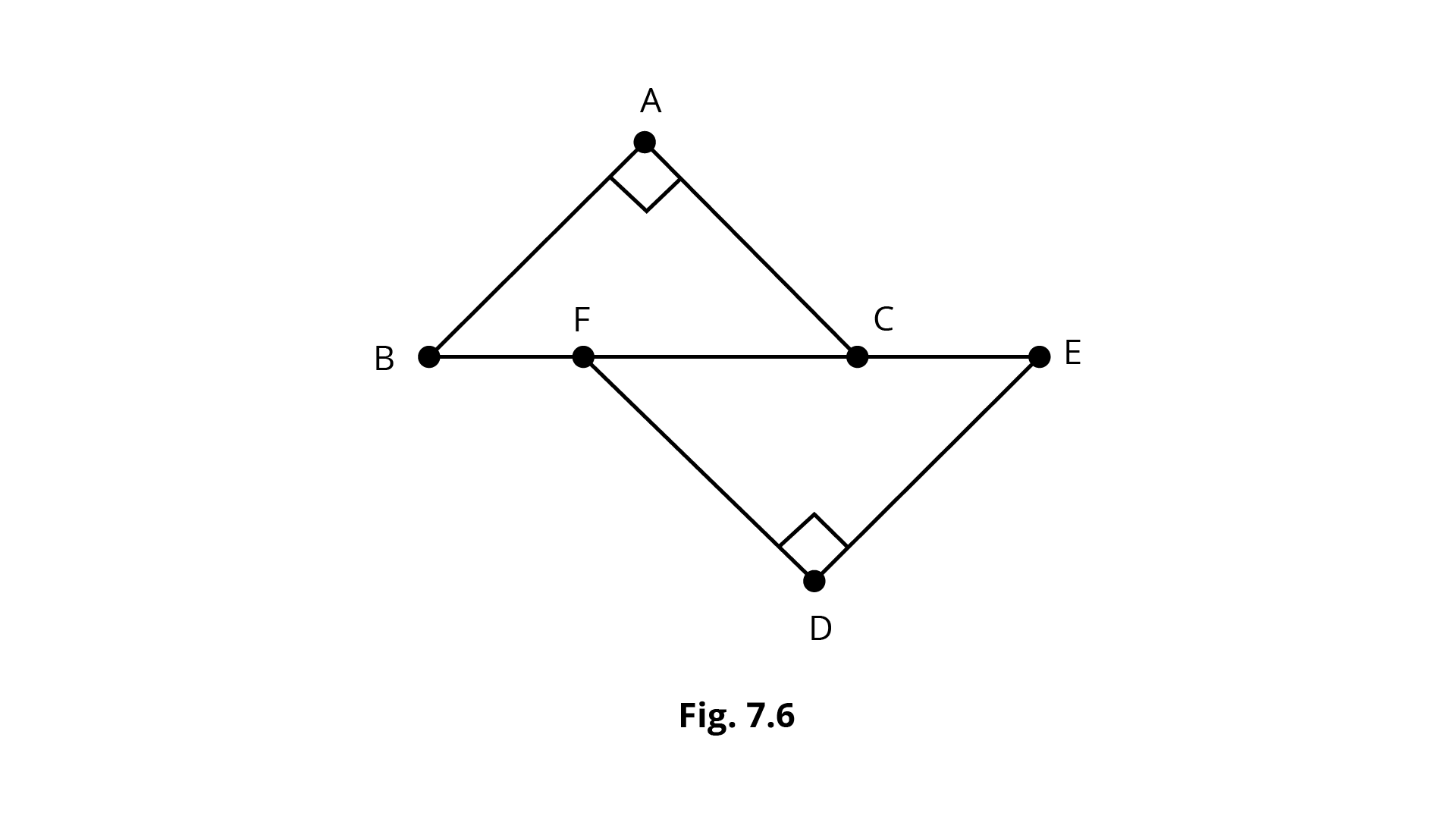
Ans: According to the question,
In
By SSS axiom, we have:
5.
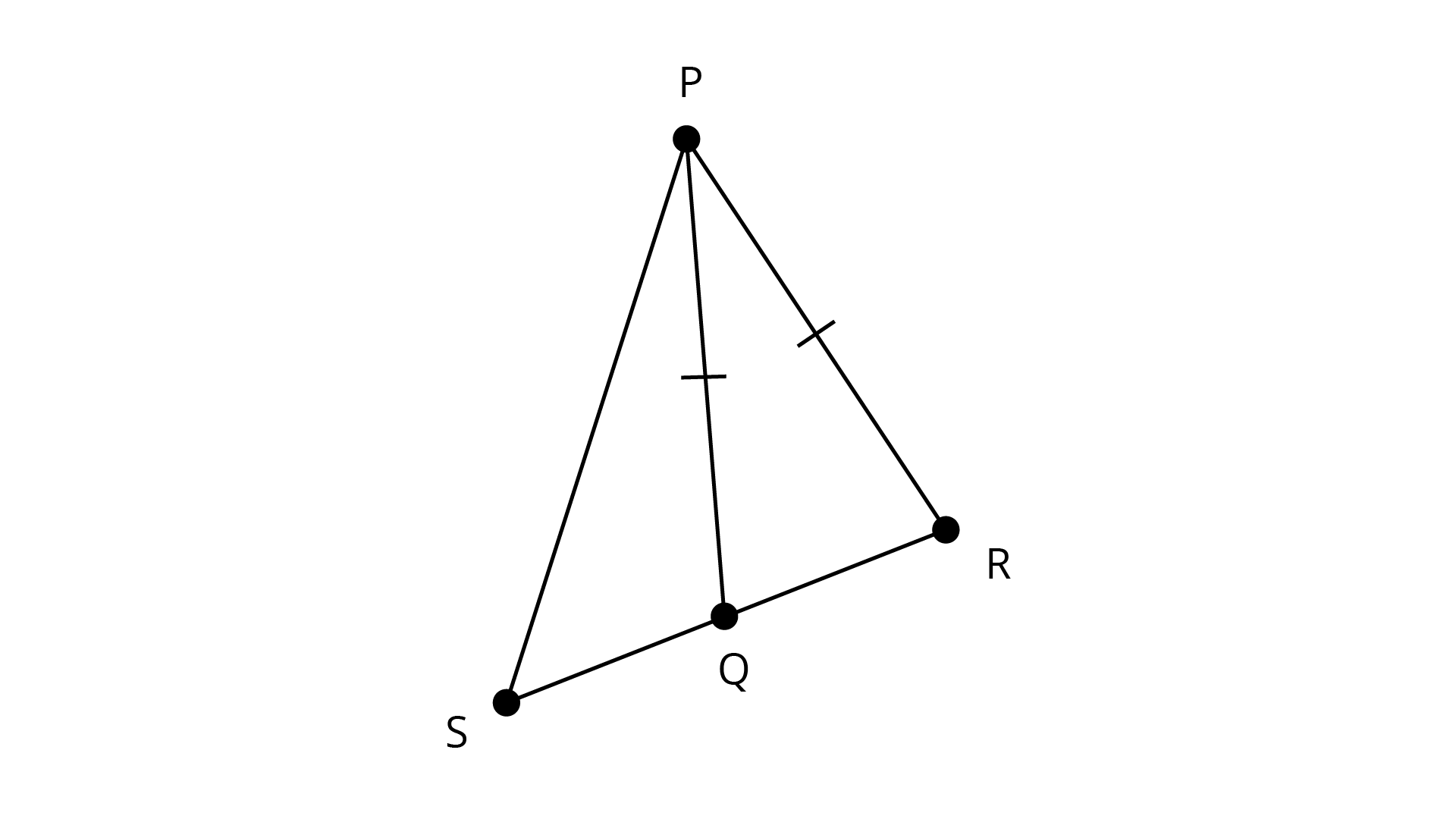
Ans: Given:
In
Now, from
Now, in
Hence, proved.
6.
Ans:
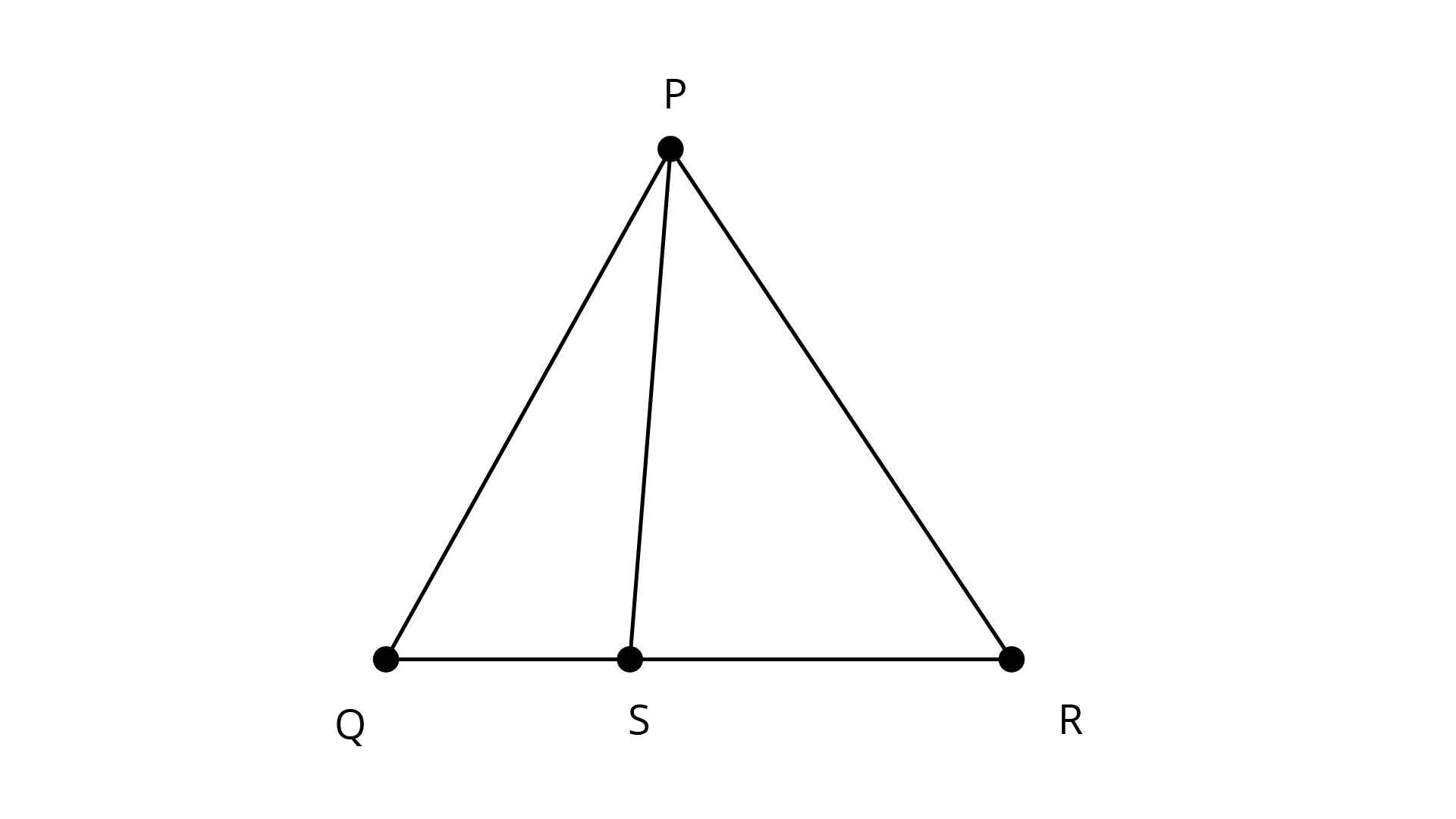
Join the points
We know that:
The sum of the length of any two sides is greater than the third side.
In
In
7. D is any point on the side
Ans: D is any point on side
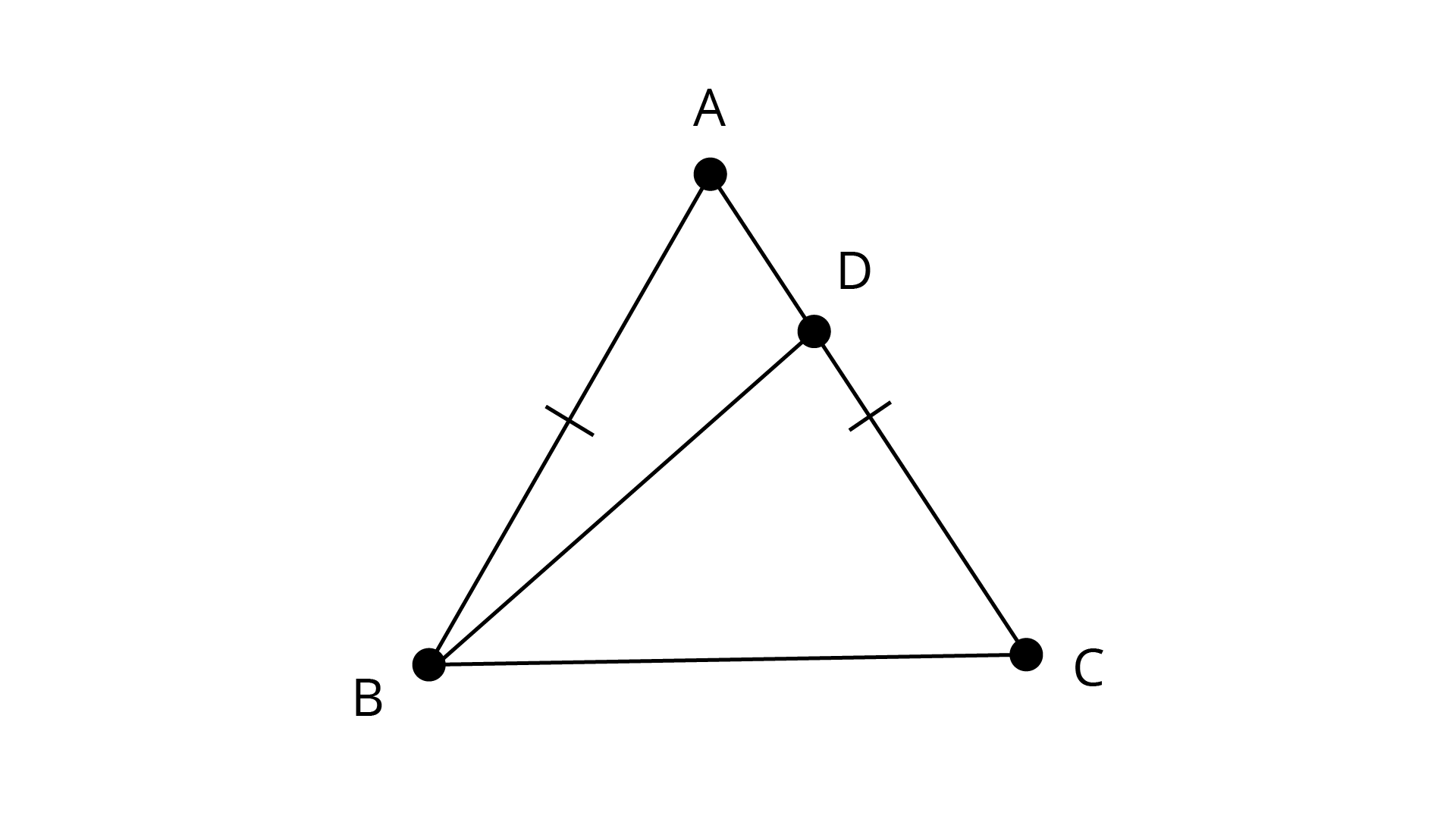
We know that:
Opposite angles to equal sides are equal.
From the figure, we have:
From equation
i.e.
It means that
So we get
Therefore, it is proved that
8. In Fig. 7.7,
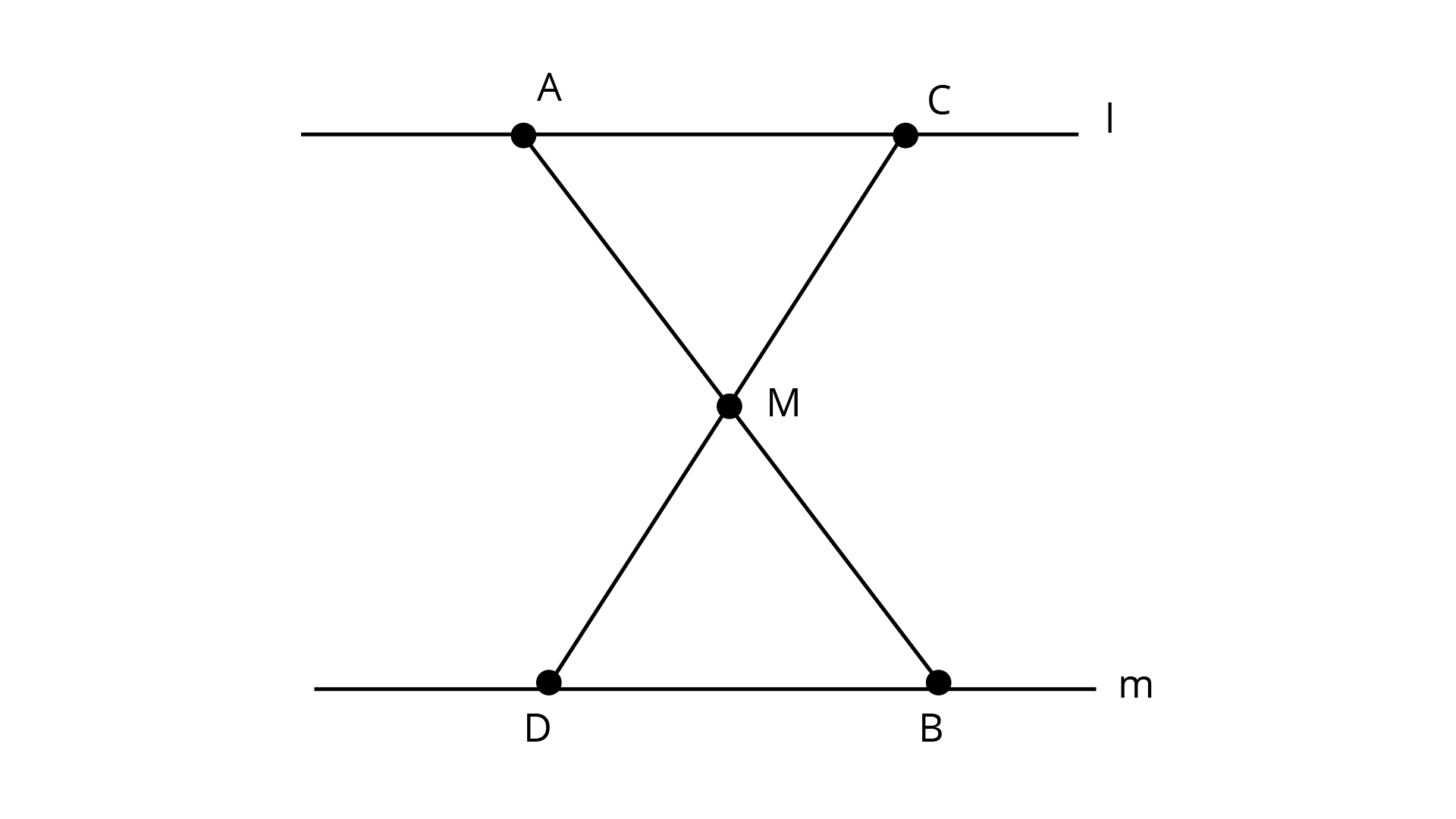
Ans:
Hence, According to ASA Congruence Criterion
Hence,
So, Point
9. Bisectors of the angles
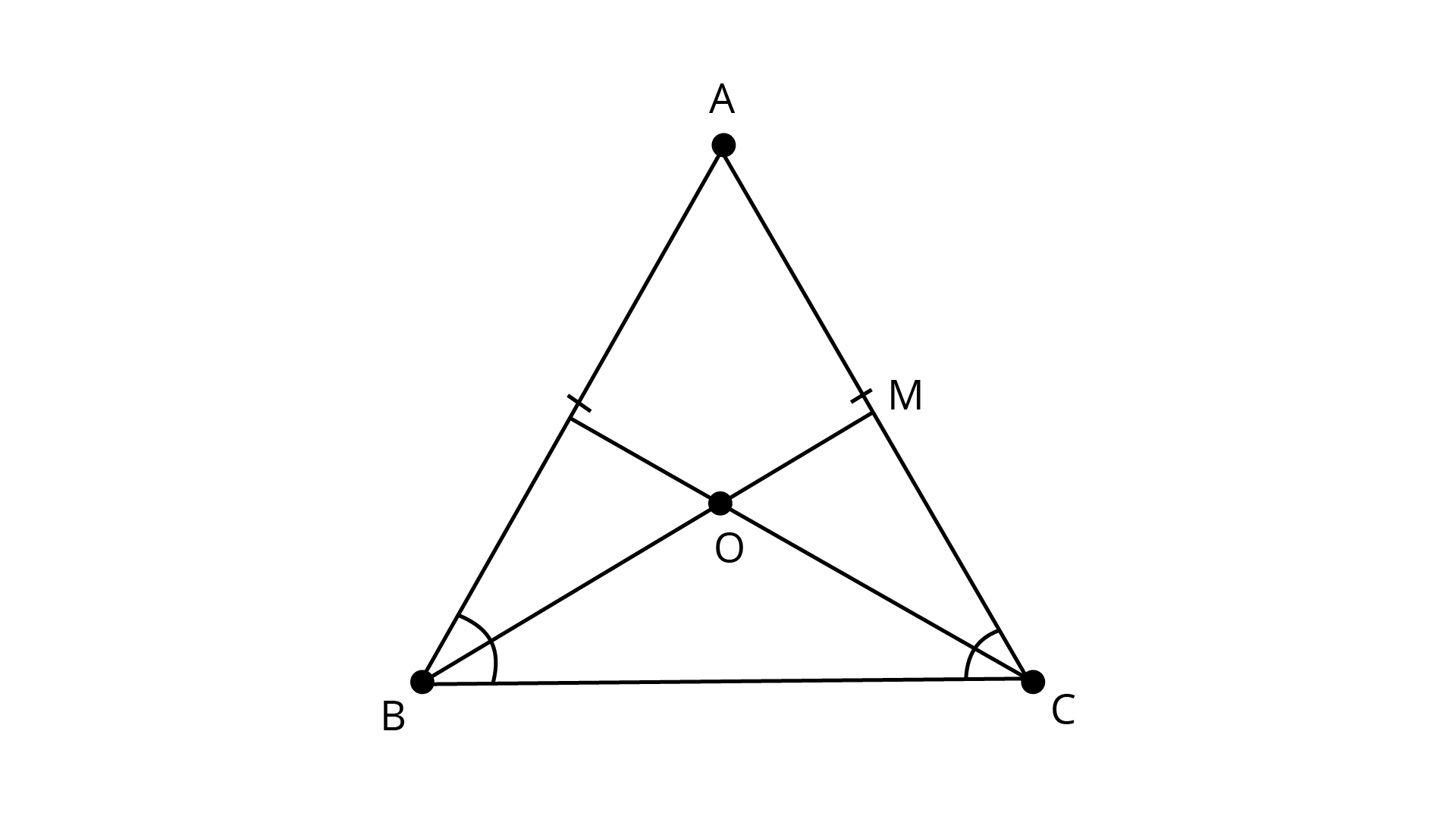
Ans: Given,
Lines
In
Now, OB and OC are the bisector of
We know that:
The bisector divides a given angle into two angles with equal measures.
Now, from equation (1), we have
(Since,
10. Bisectors of the angles
Ans: Bisectors of the angles
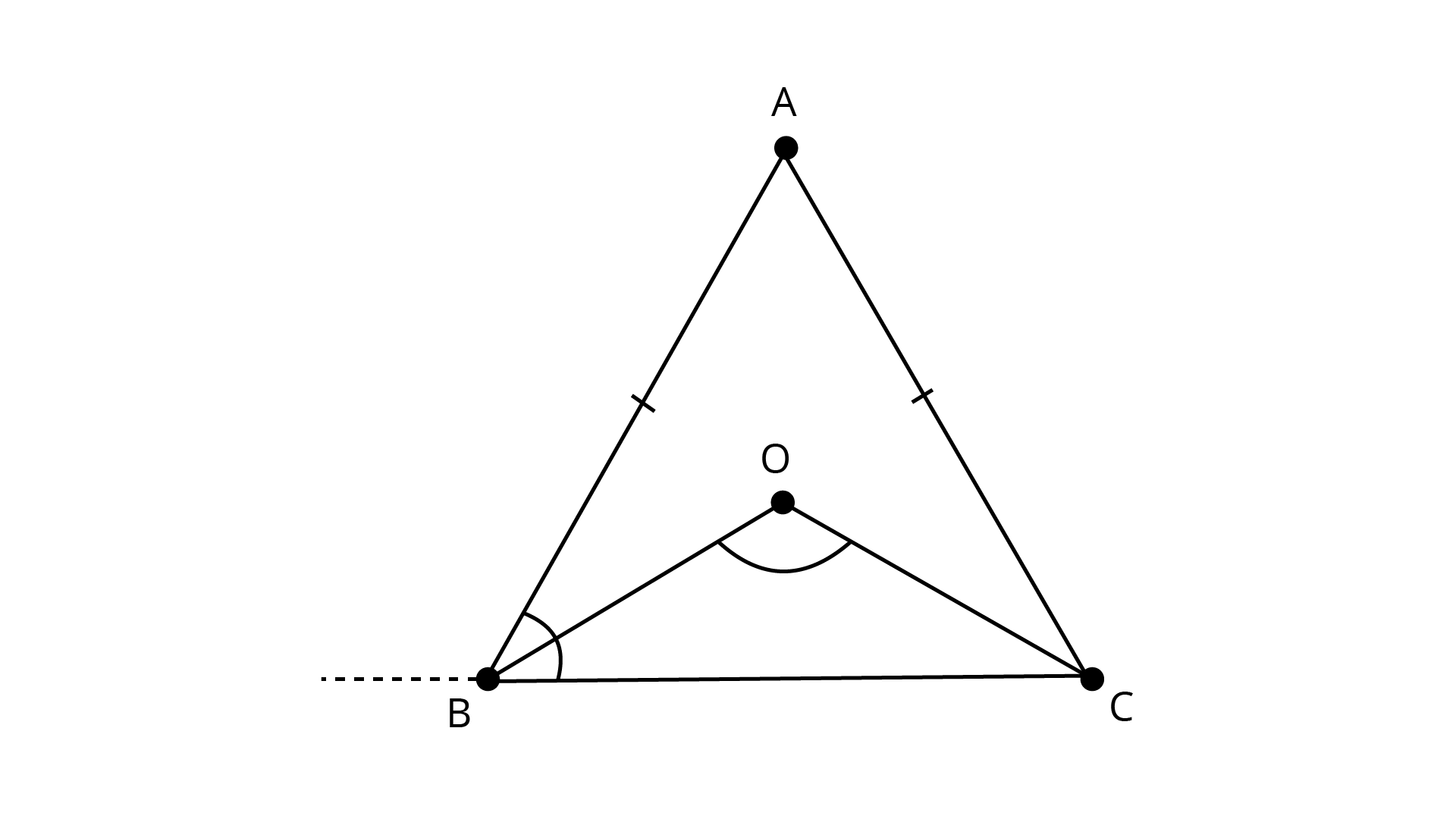
In
Since, BO and CO are the bisectors of
In
11. In Fig, AD is the bisector of
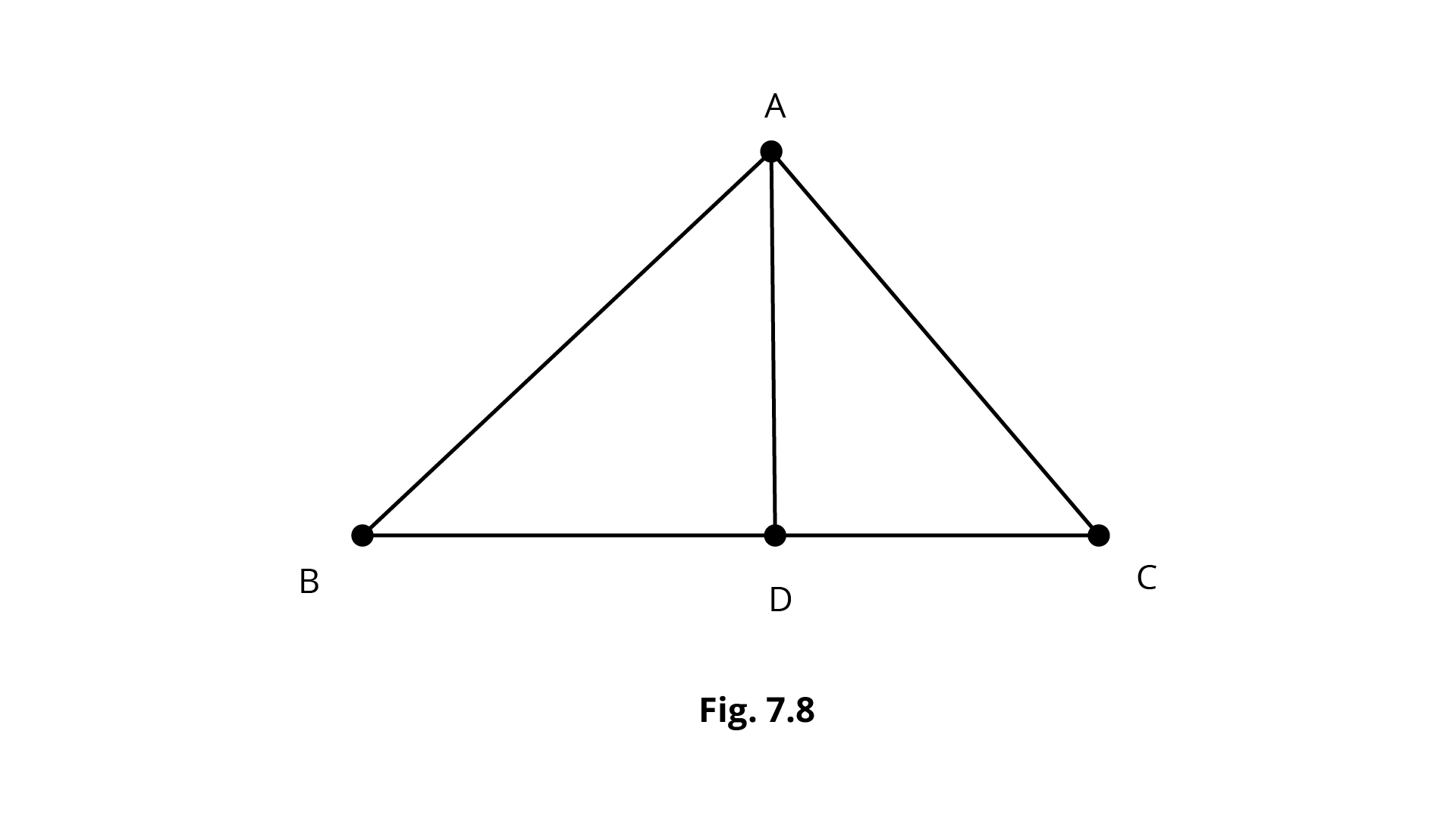
Ans: In
Let
AD is the bisector of
Also in
But
Hence proved.
Sample Question 1: In Fig. 7.9, ABC is a right triangle and right angled at B such that
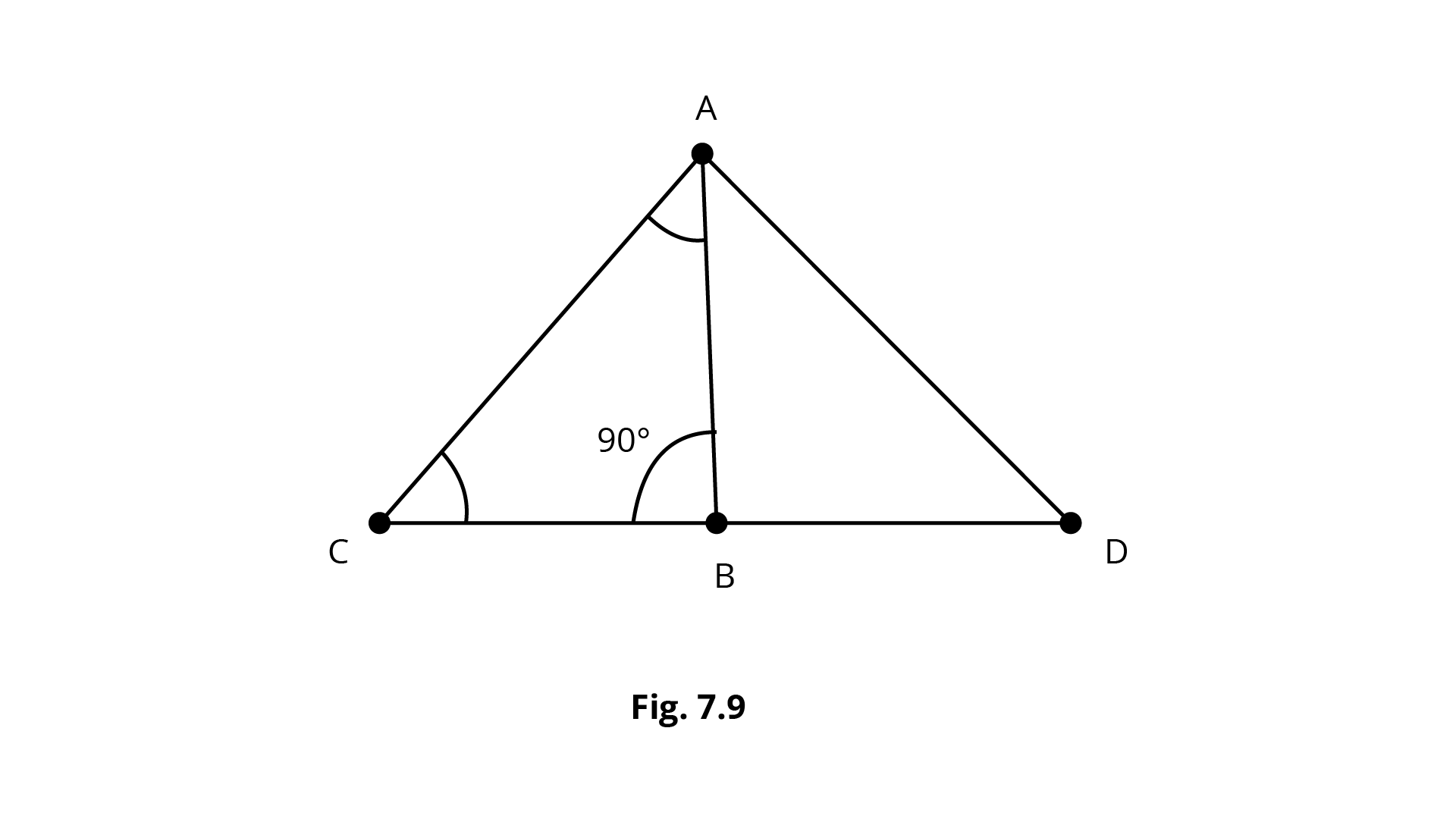
Ans: Produce
In
Therefore
So,
Let
and
Thus,
and
That is,
or
Sample Question 2: Prove that if in two triangles two angles and the included side of
one triangle is equal to two angles and the included side of the other triangle, then the two triangles are congruent.
Ans: In two triangles two angles and the included side of one triangle is equal to two angles and the included side of the other triangle.
Draw the triangles.
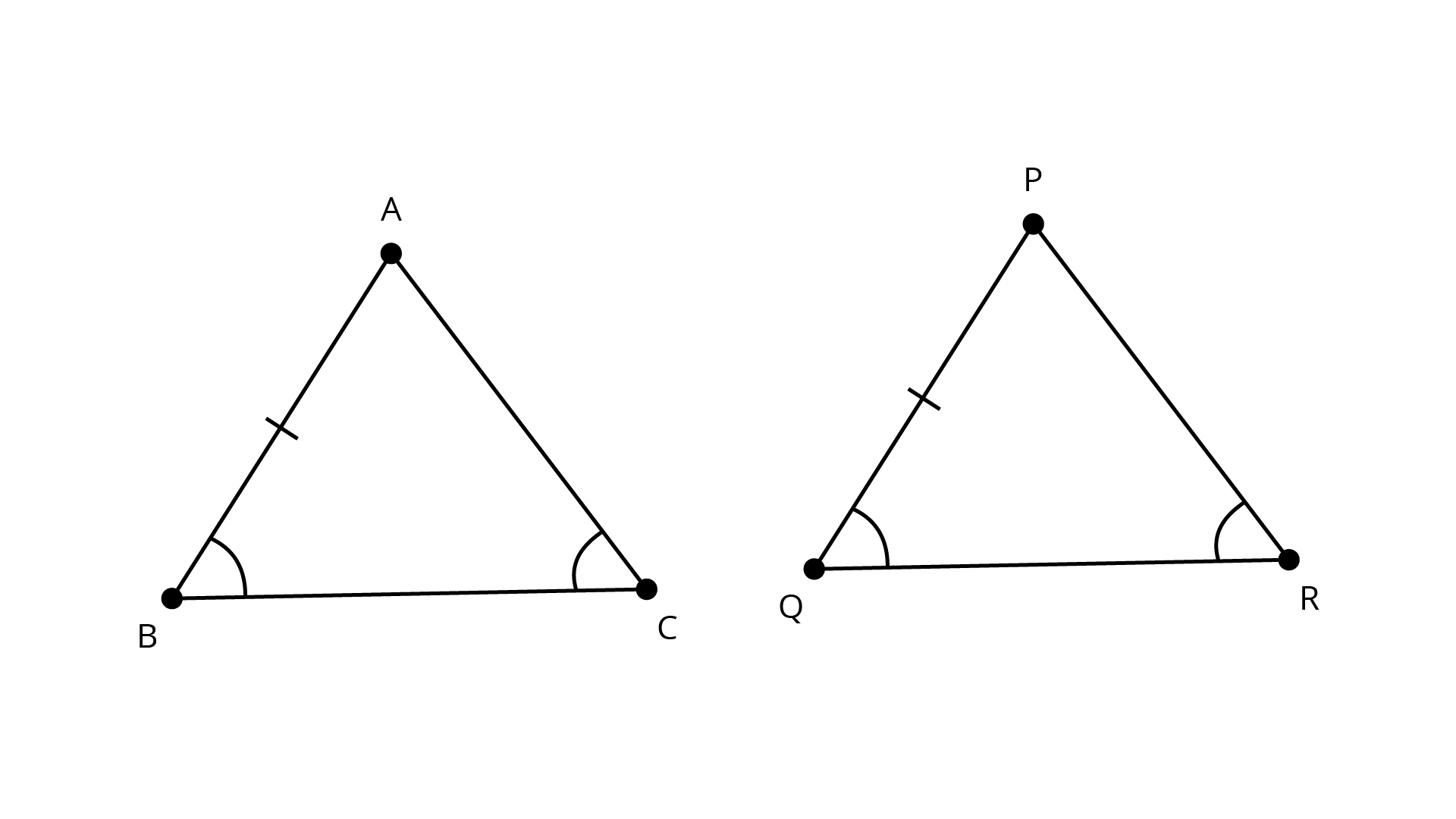
Let say,
Sample Question 3: If the bisector of an angle of a triangle also bisects the opposite side, prove that the triangle is isosceles.
Ans: The bisector of an angle of a triangle also bisects the opposite side.
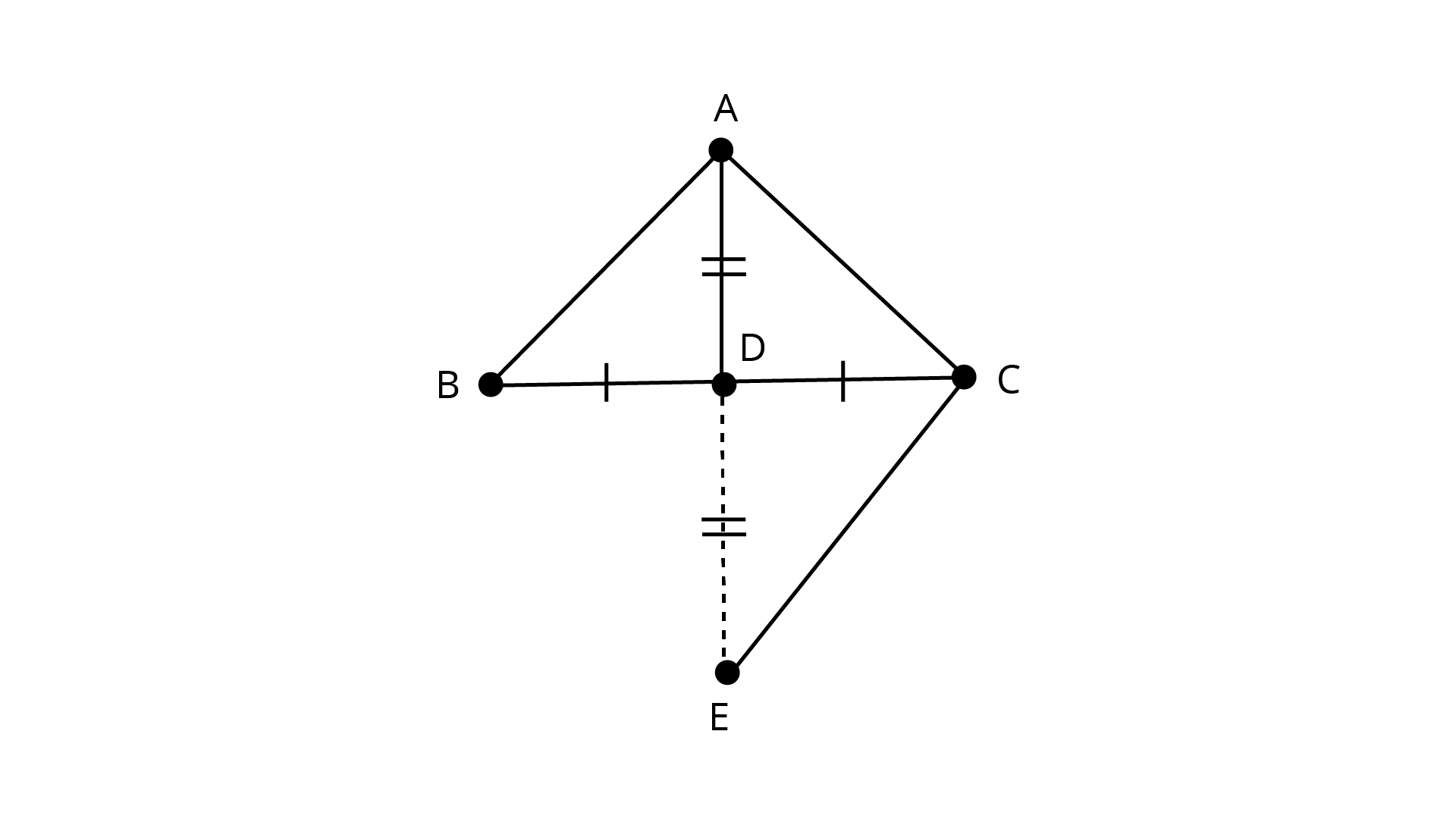
In
Thus,
We know that:
A triangle that has two sides of equal length is known as Isosceles triangle.
Hence,
Sample Question 4:
Ans:
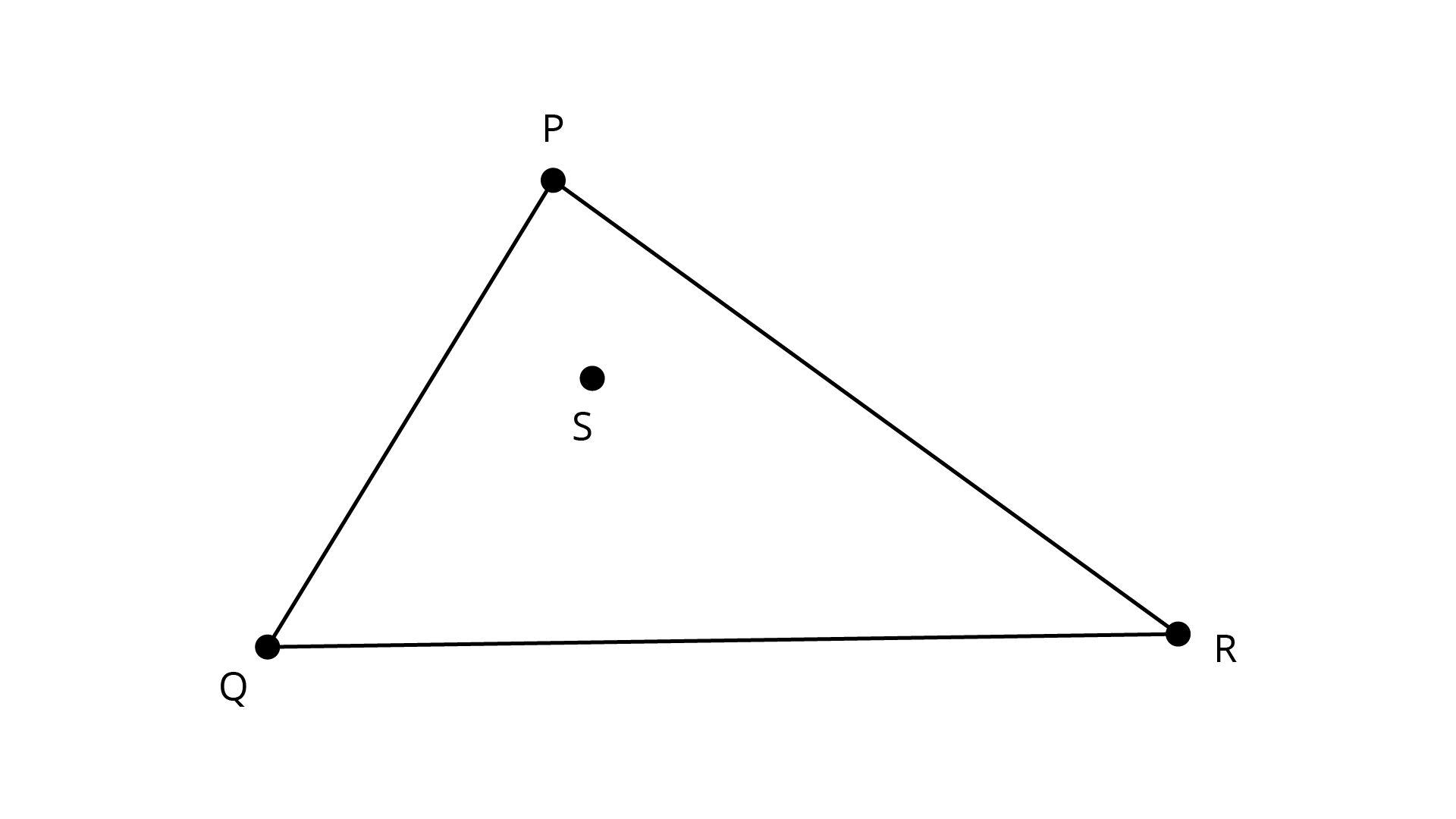
Let us project
From
Adding equation (1) and (2),
EXERCISE 7.4
1. Find all the angles of an equilateral triangle.
Ans: Given,
In an equilateral triangle all the angles are equal.
Sum of angles in a triangle
Thus,
2. The image of an object placed at a point
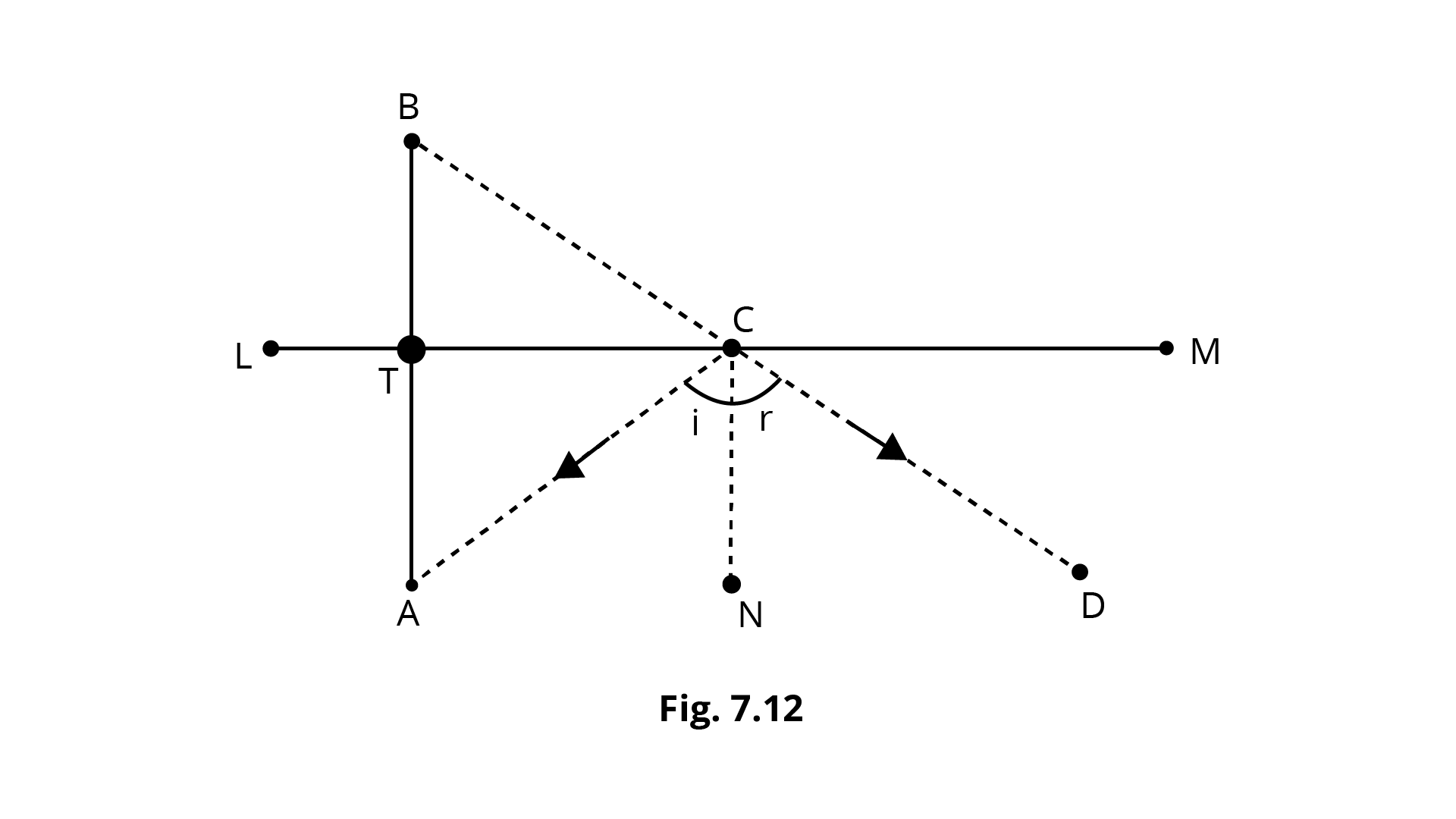
Ans: The image of an object placed at a point
From figure we need to prove that AT=BT
We have,
Angle of incidence = Angle of reflection
Therefore,
Since,
From the figure we know that
We know that
From the figure we know that
By considering the equation
We get,
Now in
By AAS congruence criterion
Therefore, it is proved that the image is as far behind the mirror as the object is in front of the mirror.
3.
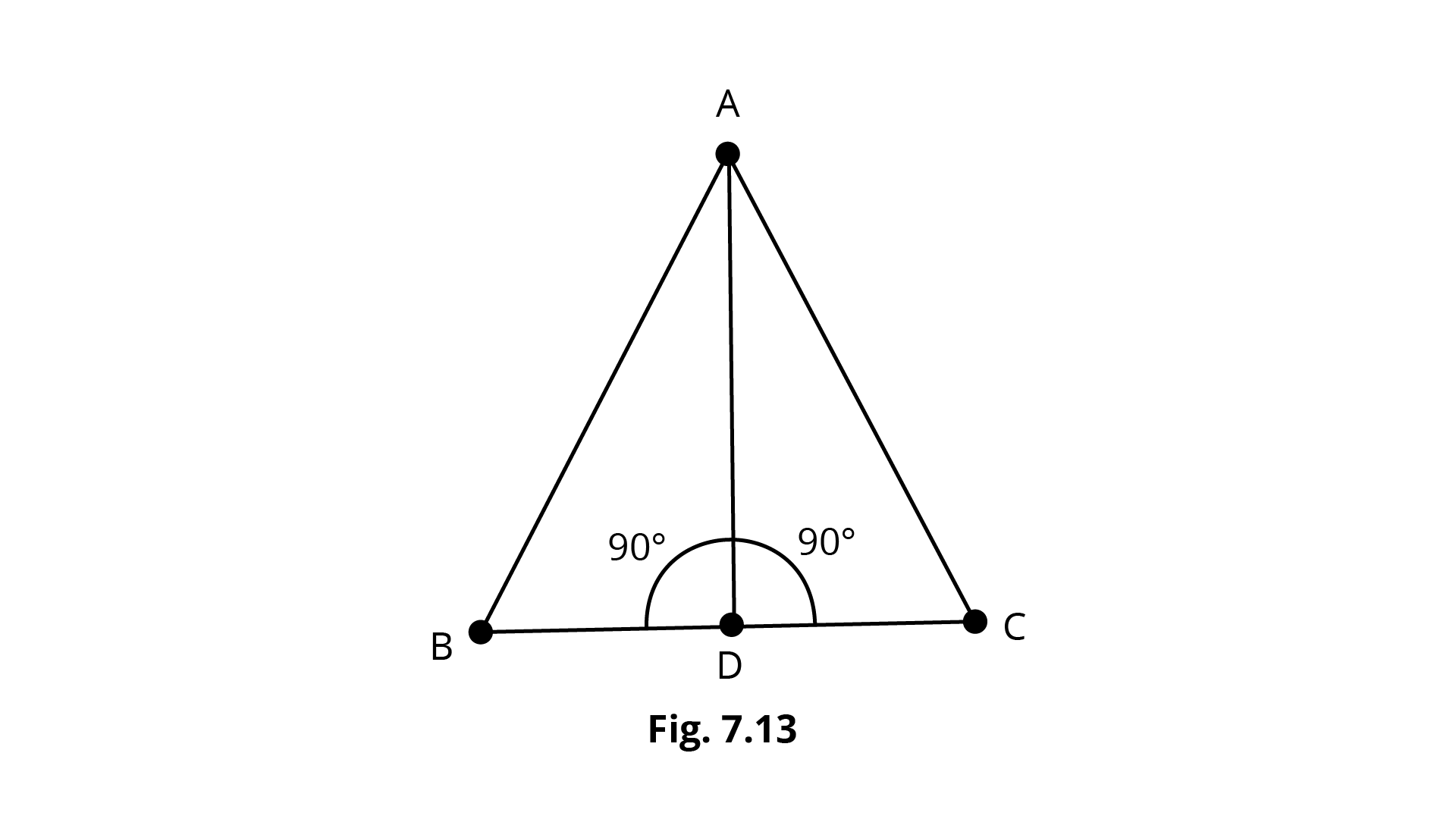
In
and
Therefore,
So,
What is the defect in the above arguments?
{Hint: Recall how
Ans:
So,
So, the defect in the given argument is that firstly prove
4. P is a point on the bisector of
Ans: Let BP is bisector of
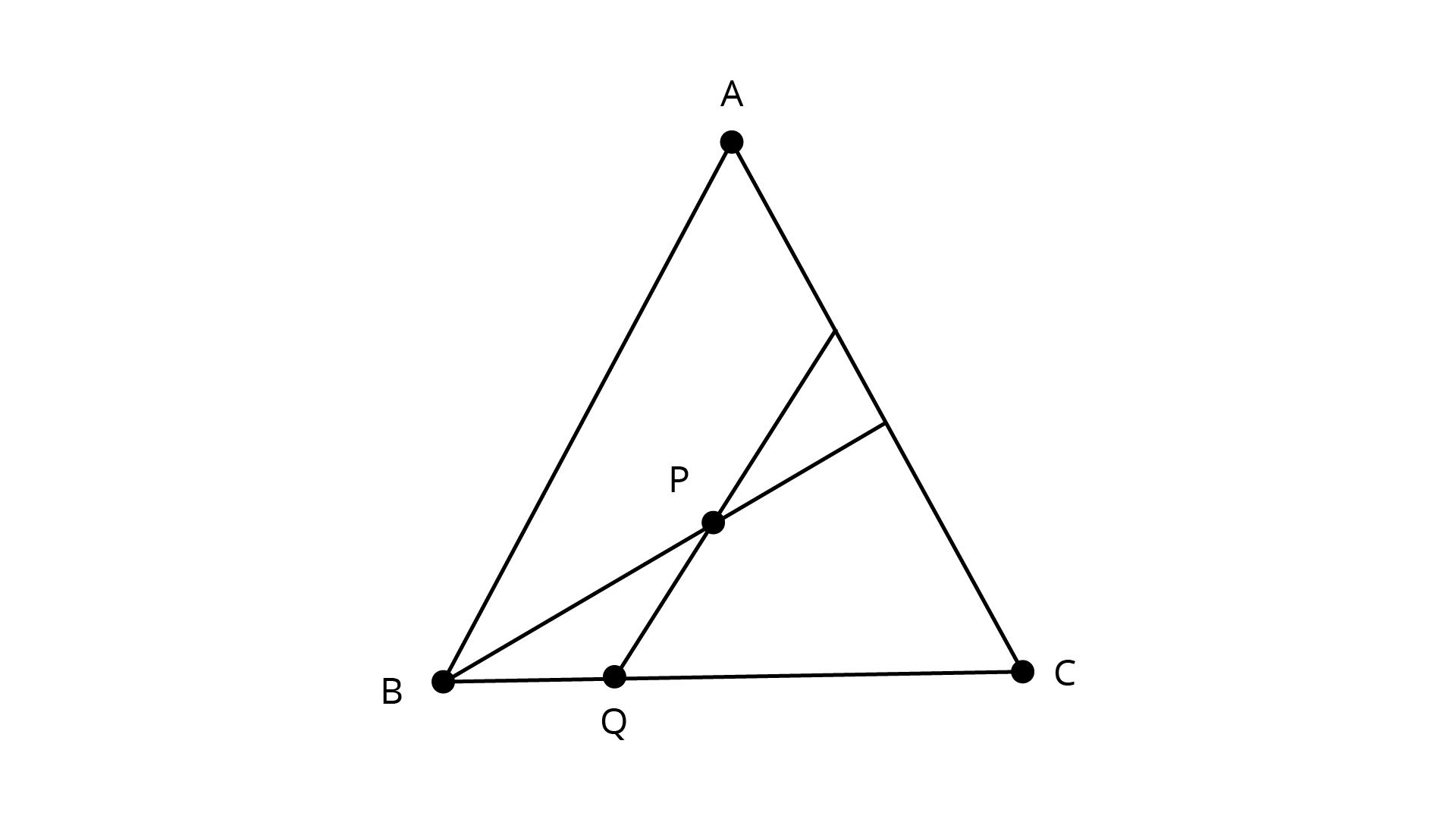
Now, (given)
From (1) and (2), we get
Now, In
Hence proved.
5. ABCD is a quadrilateral in which AB = BC and AD = CD. Show that
Ans: ABCD is a quadrilateral in which
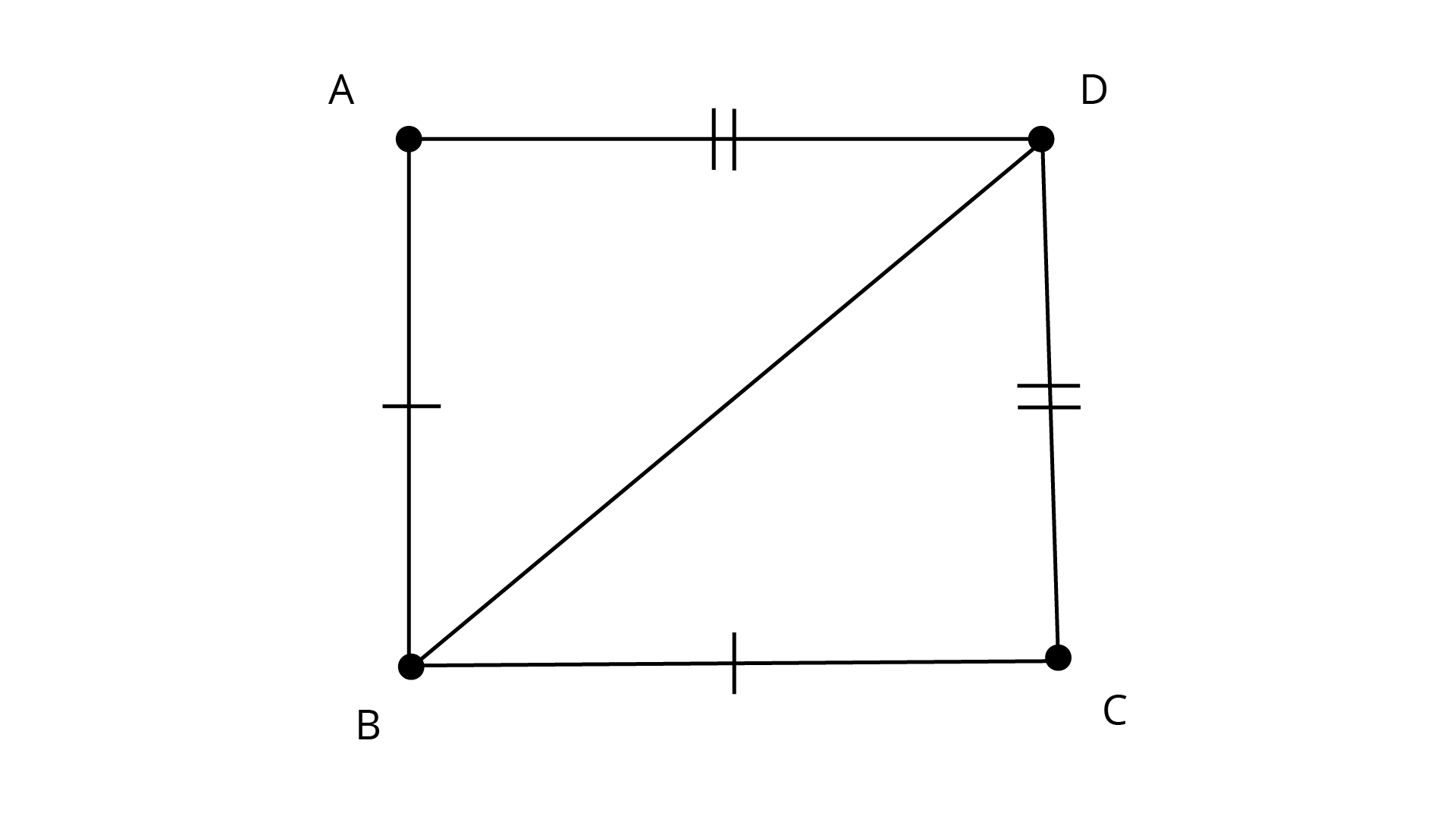
In
By SSS criterion of congruence,
By CPCT, we have
We know that:
The bisectors divides a given angle into two angles with equal measures.
Hence,
6. ABC is a right triangle with
Ans: ABC is a right triangle with
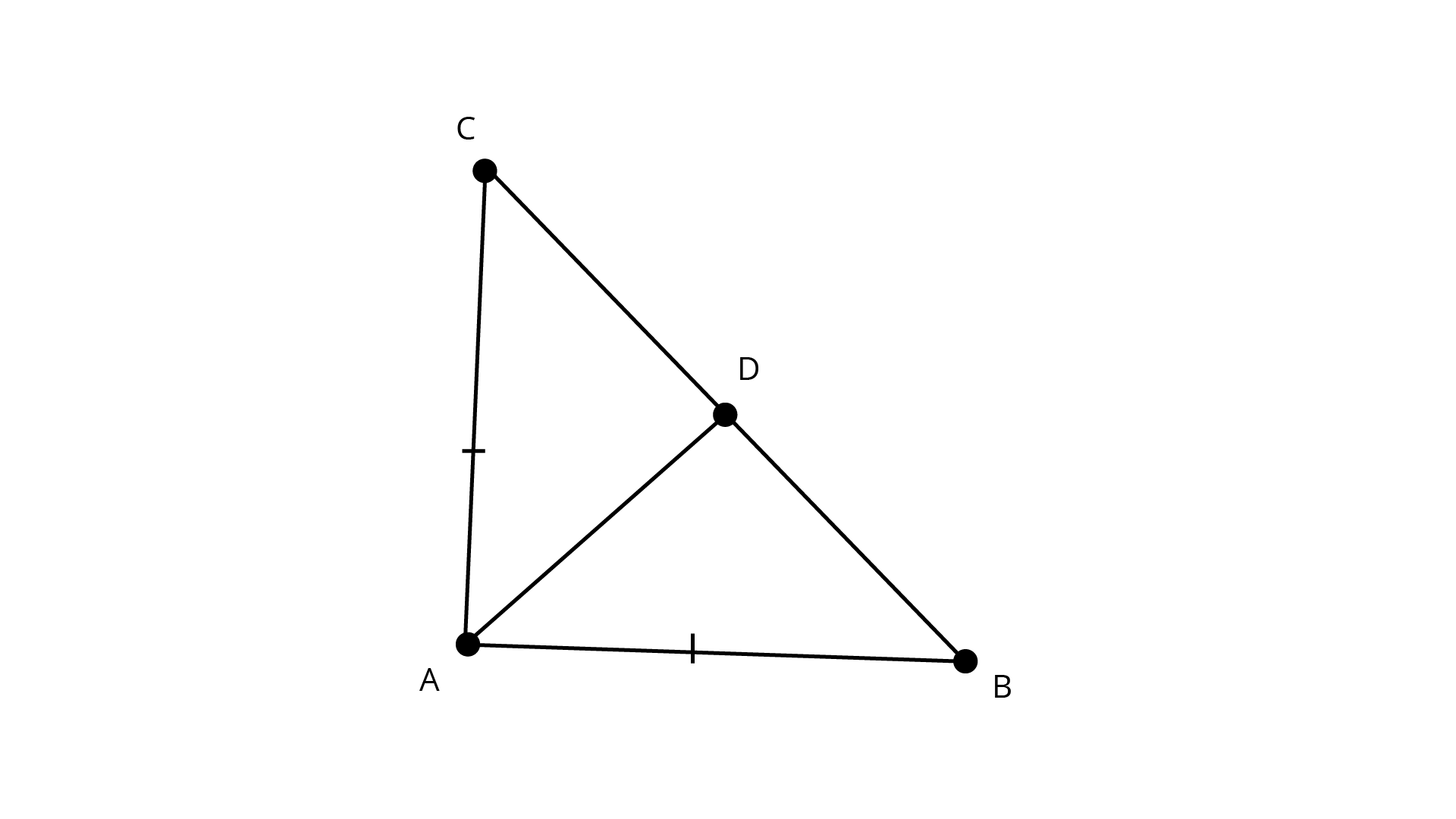
In
As
and
In
In
Adding (i) and (ii), we get
Hence Proved.
7.
triangle. Show that
Ans:
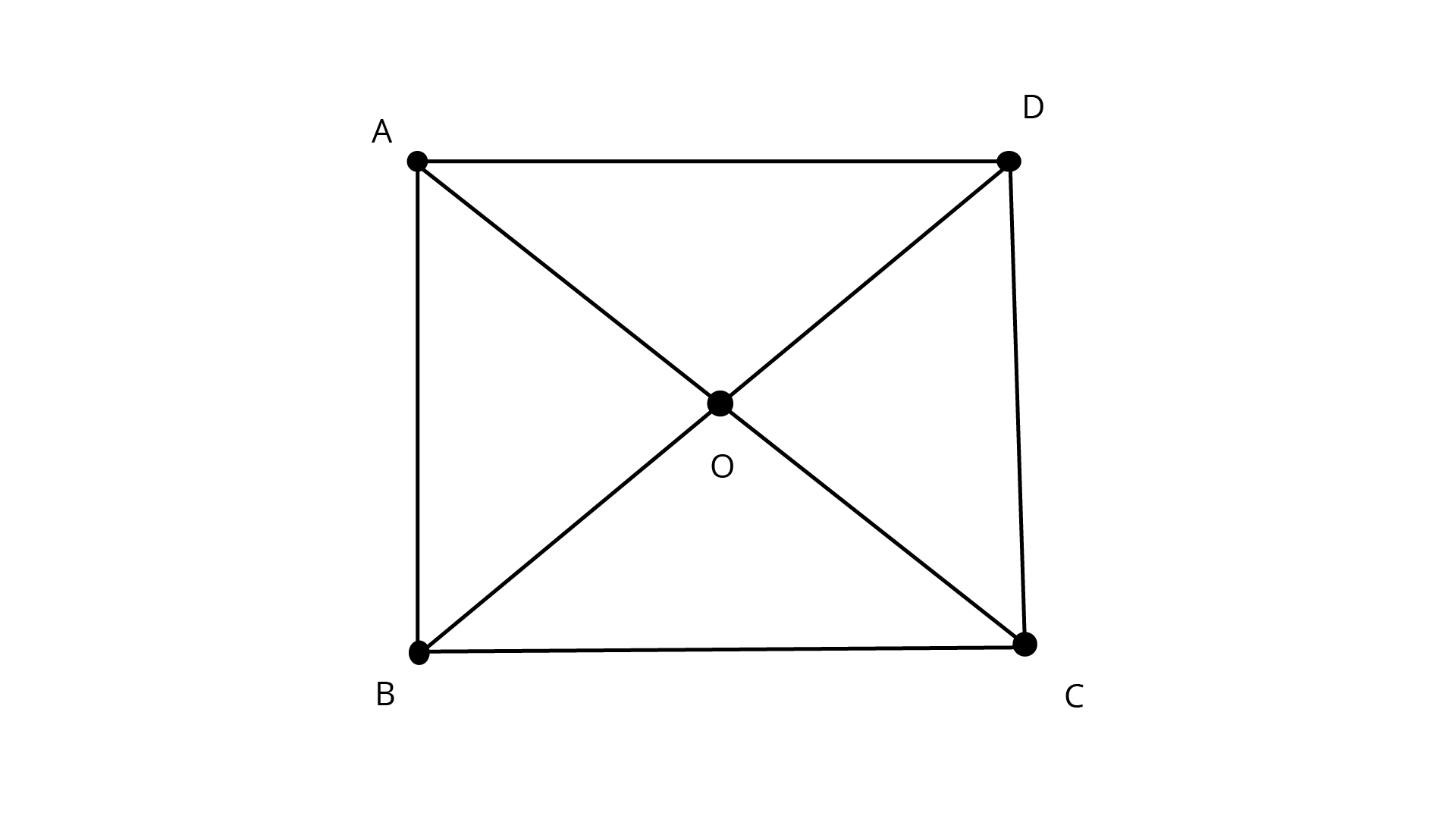
ln
then
So
8. ABC and DBC are two triangles on the same base
Ans:
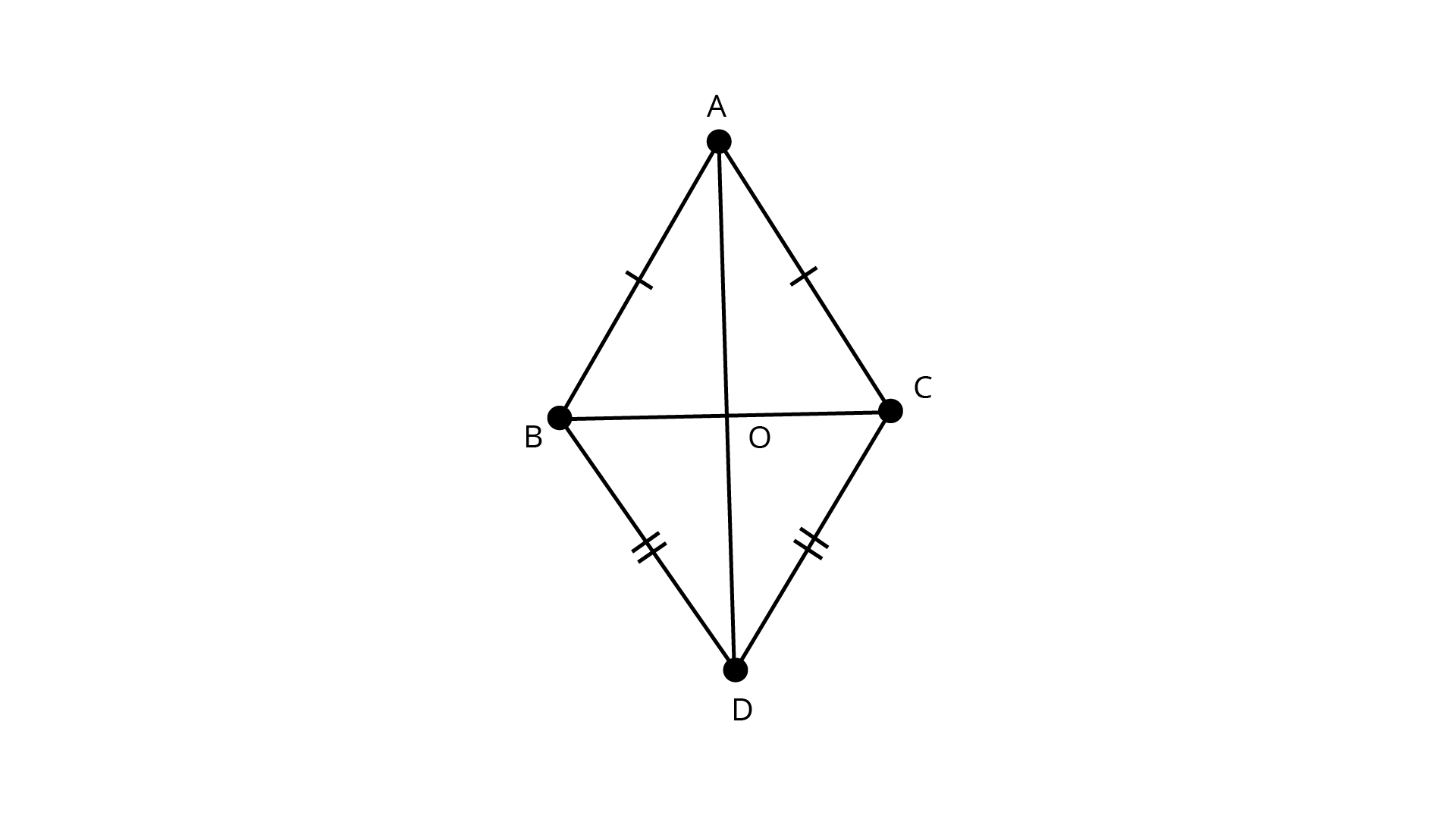
In
AB = AC {given}
AD = DA {common}
BD = DC {given}
In
But
Hence
9. ABC is an isosceles triangle in which
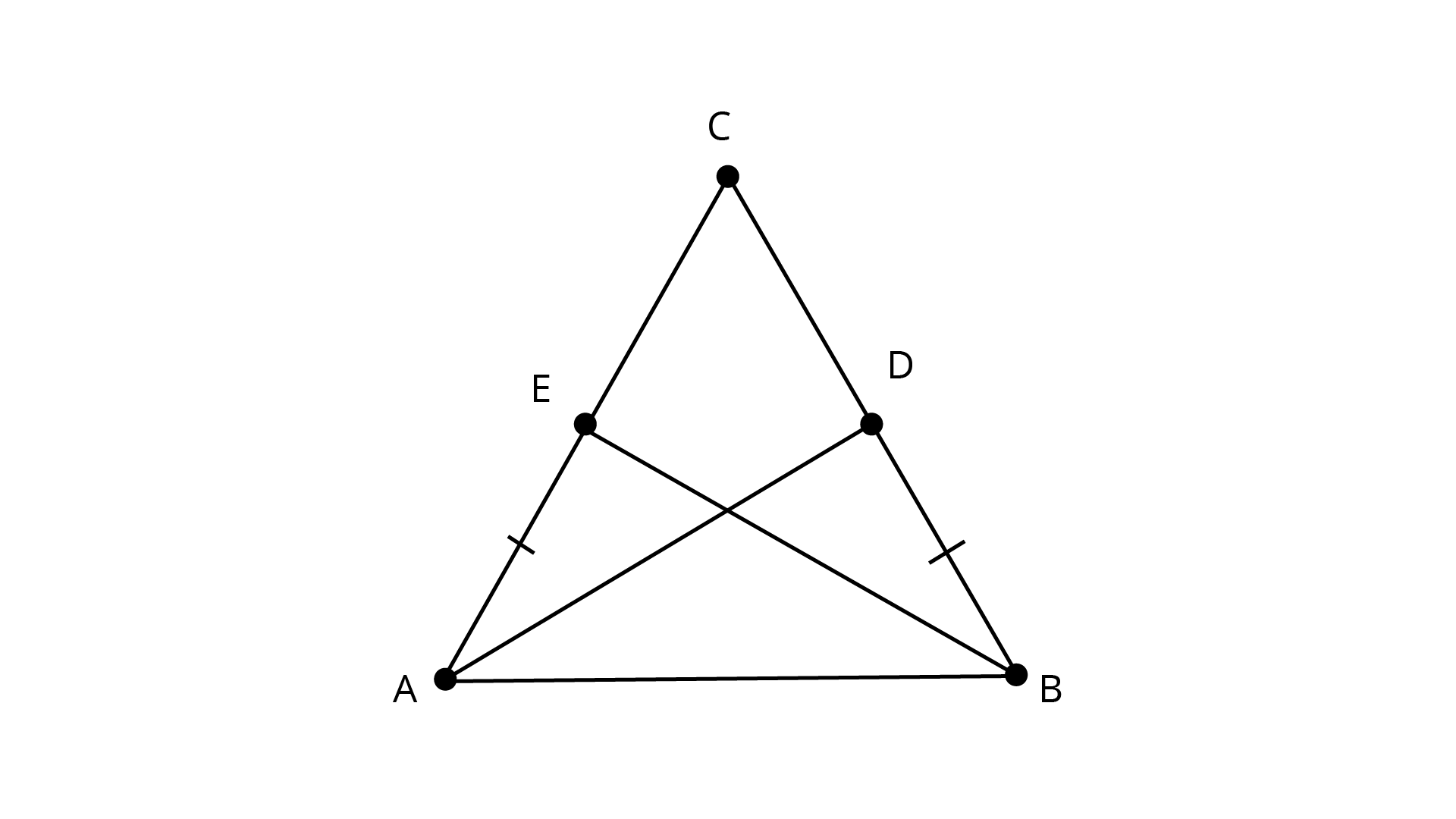
Ans: In
Now in
and
10. Prove that sum of any two sides of a triangle is greater than twice the median with respect to the third side.
Ans: Consider,
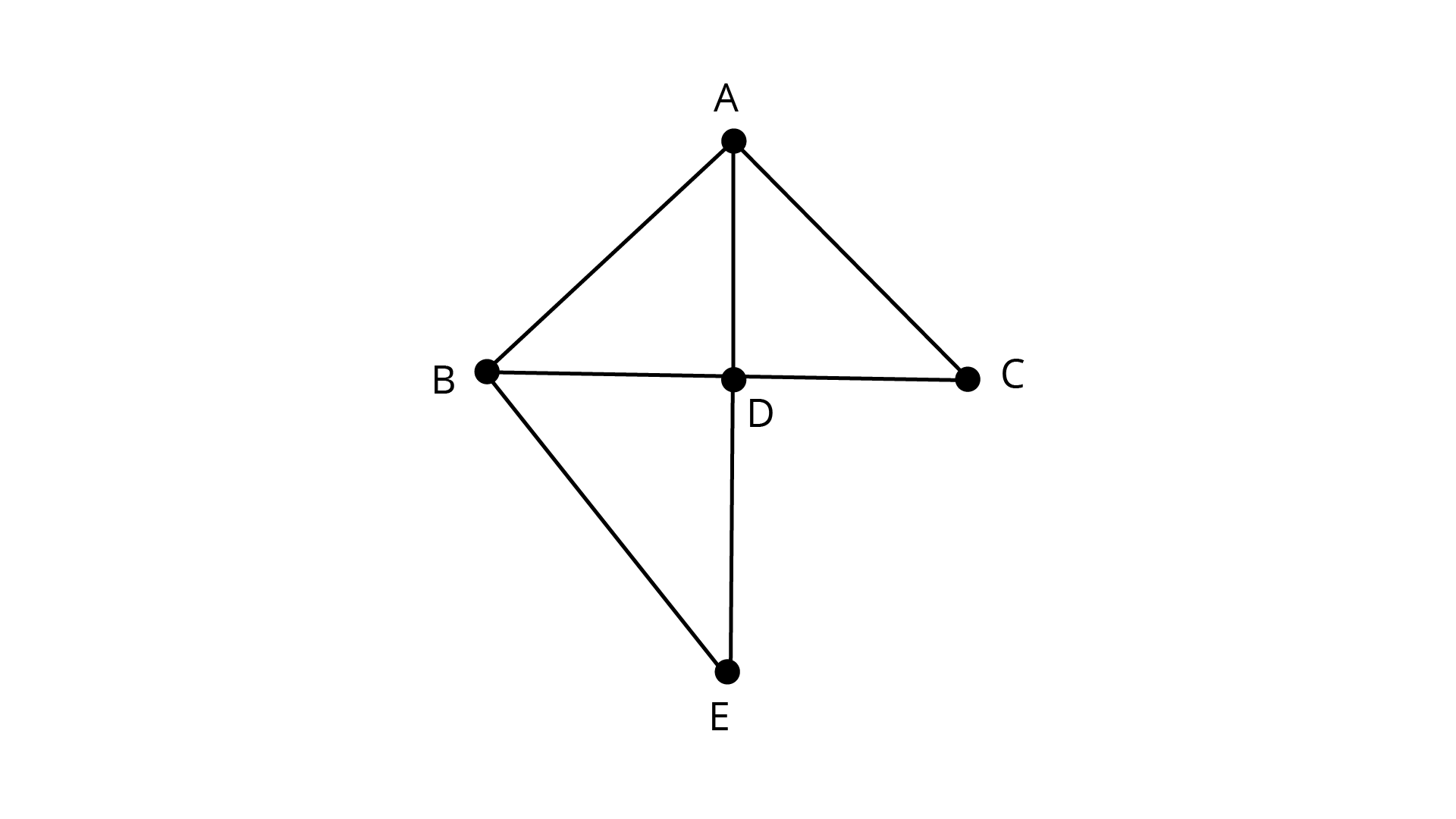
Produce
In
By SAS criterion of congruence, we have:
Now in
Hence the sum of any two sides of a triangle is greater than twice the median with respect to the third side.
11. Show that in a quadrilateral
Ans: A quadrilateral ABCD.
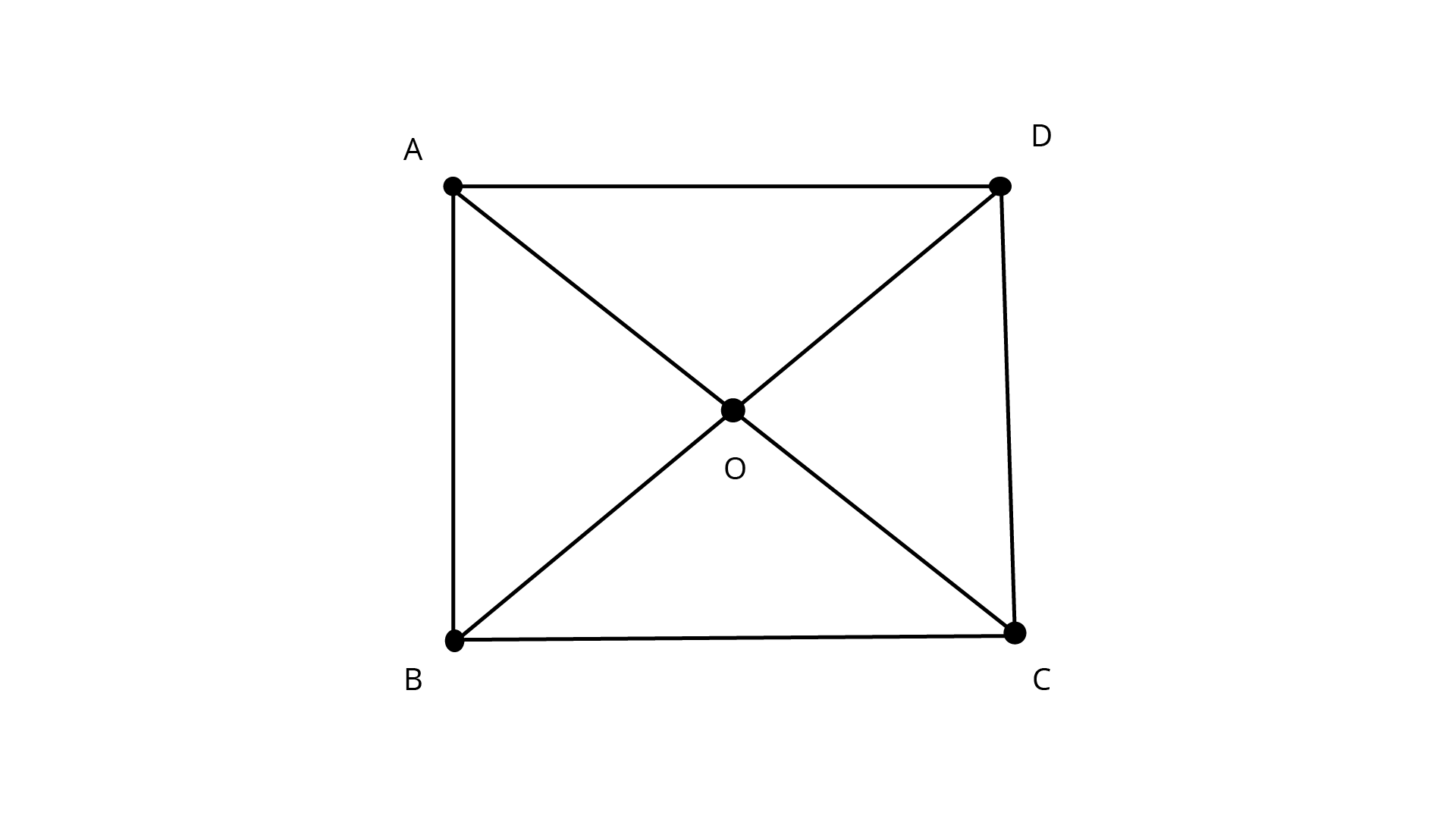
Since, the sum of lengths of any two sides in a triangle should be greater than the length of their side.
In
In
In
In
On adding Equations.
Hence, it is proved.
12. Show that in a quadrilateral
Ans: A quadrilateral
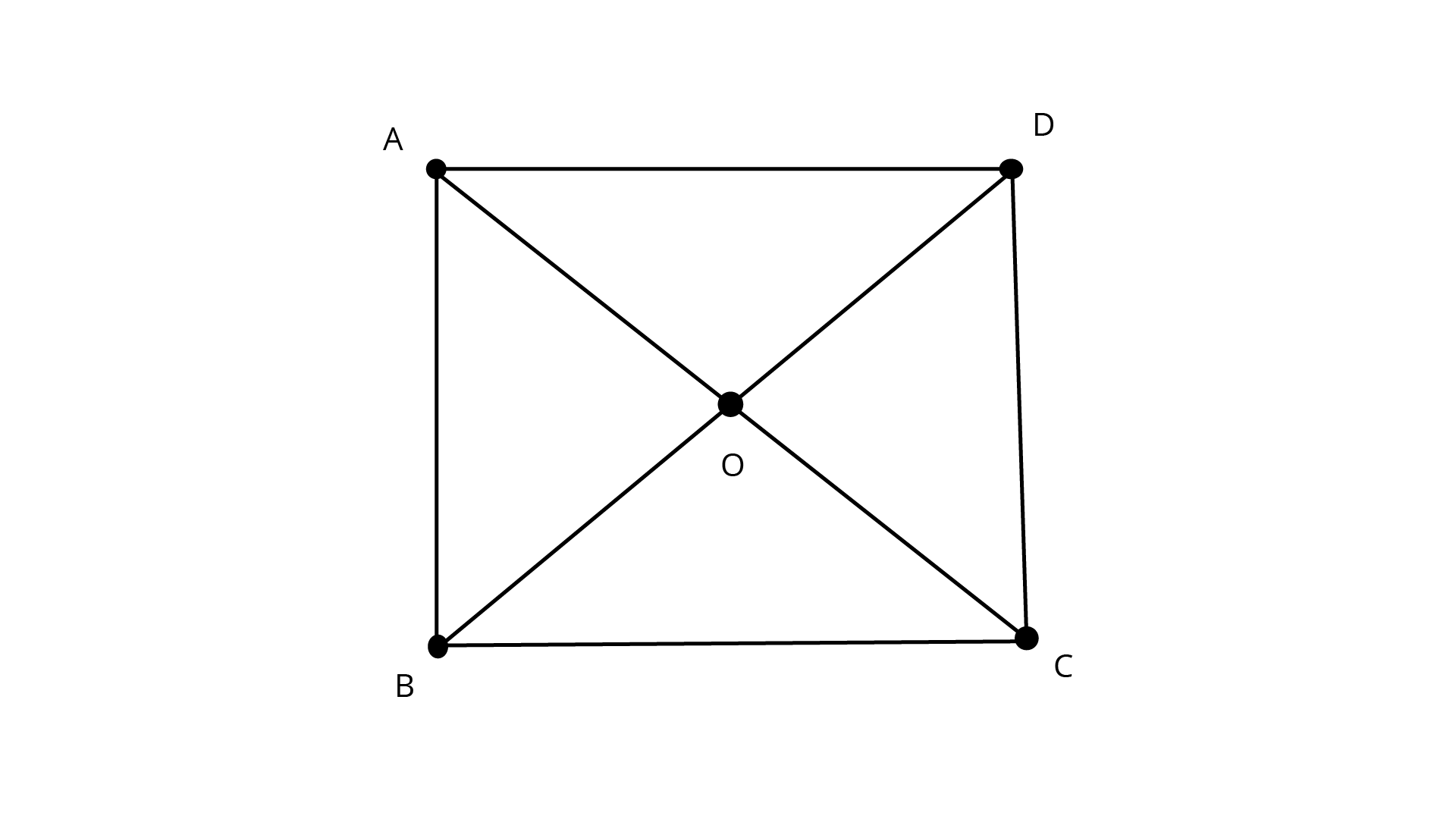
Sum of the two sides of a triangle is greater than the third side.
So, considering the triangles
On adding Equations.
Hence Proved.
13. In a triangle
Ans: In a triangle
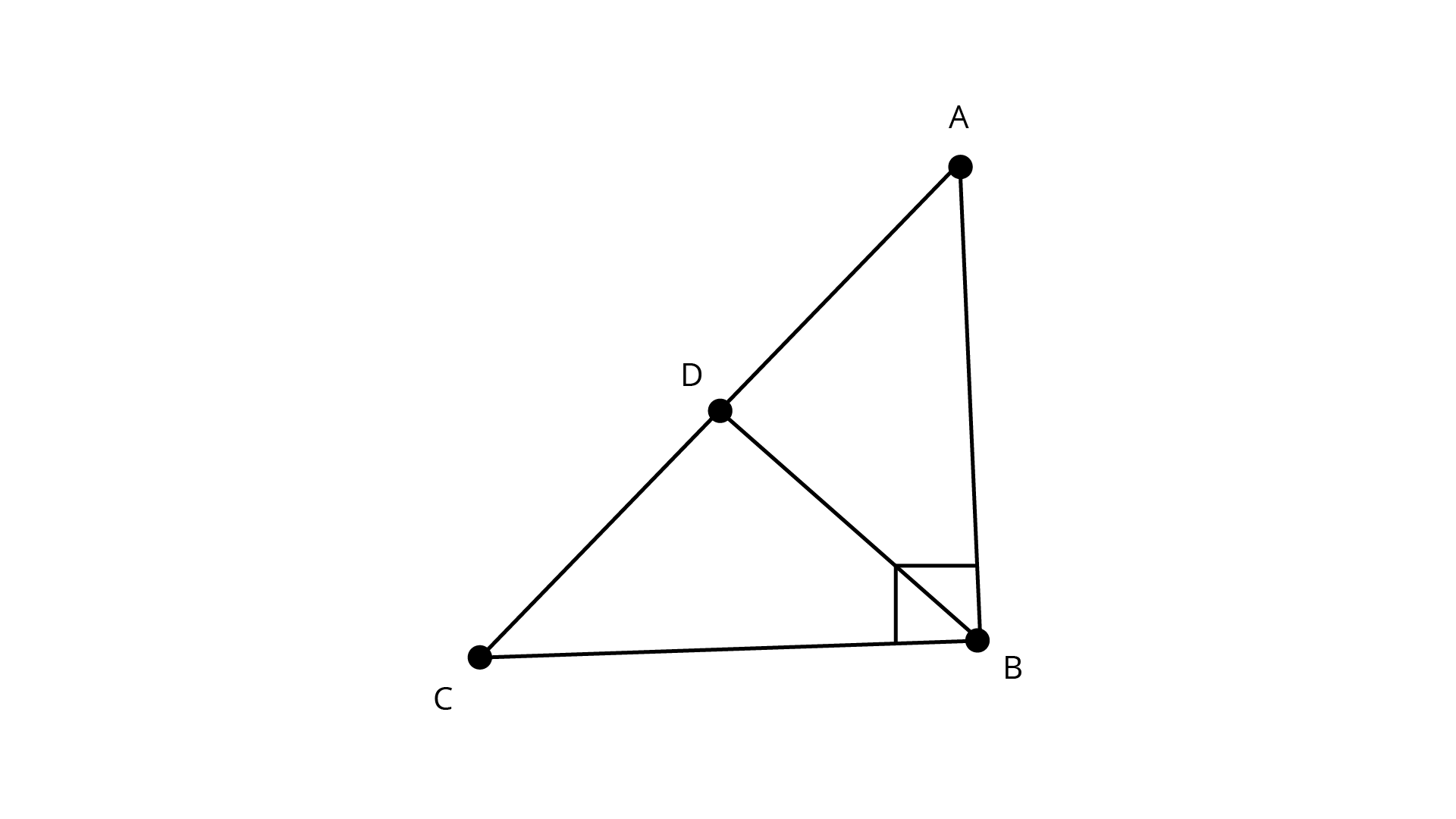
It is given that
Therefore,
Consider
The angles opposite to equal sides are equal
Therefore,
Now, consider
The angles opposite to equal sides are equal
Therefore,
By considering the angle sum property in
it can be written as
By using equation (1) and (2) we get
Therefore,
By addition
By division
Therefore,
14. In a right triangle, prove that the line-segment joining the mid-point of the hypotenuse to the opposite vertex is half the hypotenuse.
Ans: Let
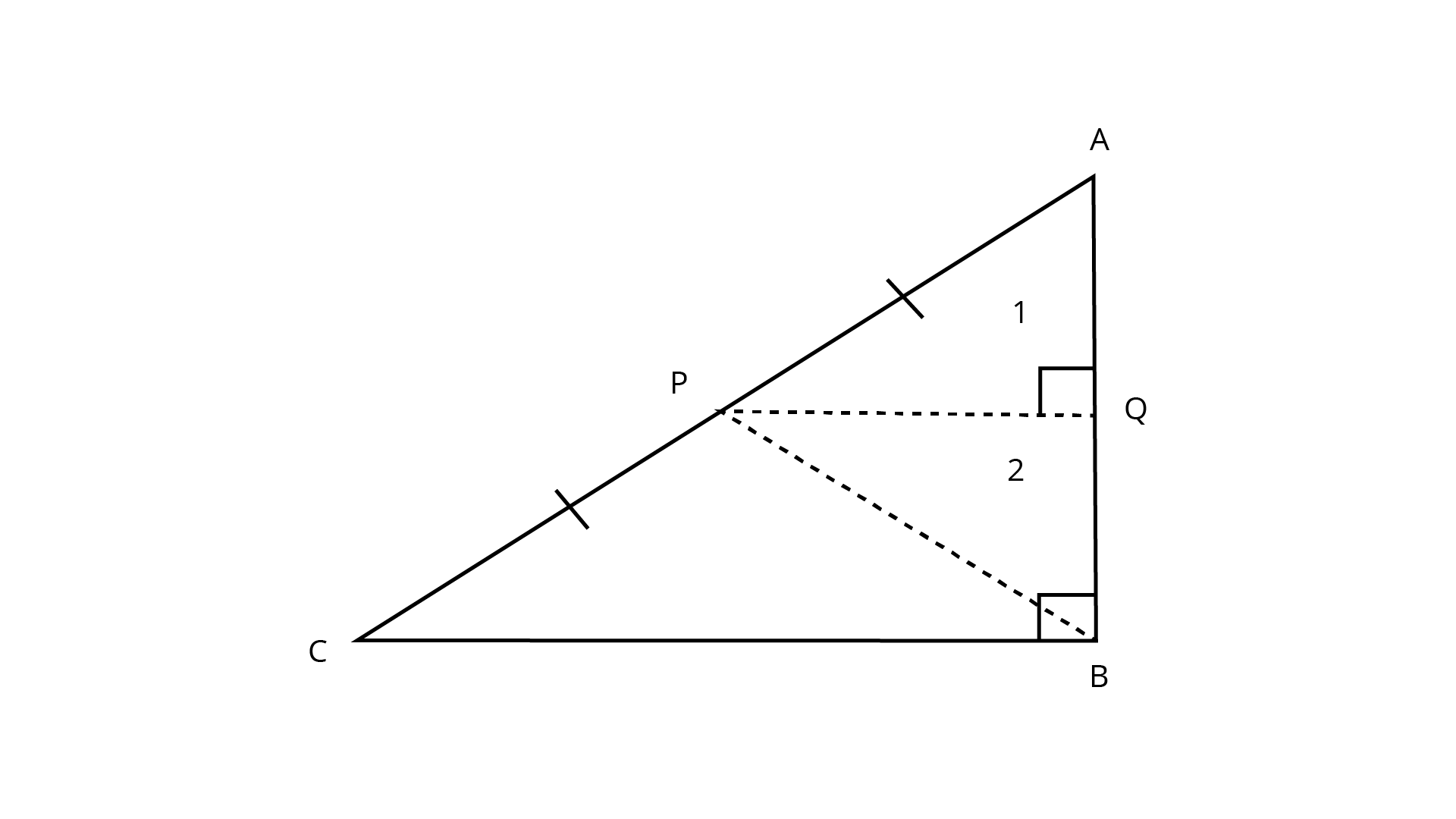
Draw through the point P.
In
Q must be midpoint of AB (converse of mid-point theorem)
Now in
By SAS criterion of congruence.
Thus,
Hence the line-segment joining the mid-point of the hypotenuse to the opposite vertex is half the hypotenuse.
15. Two lines
Ans: Two lines
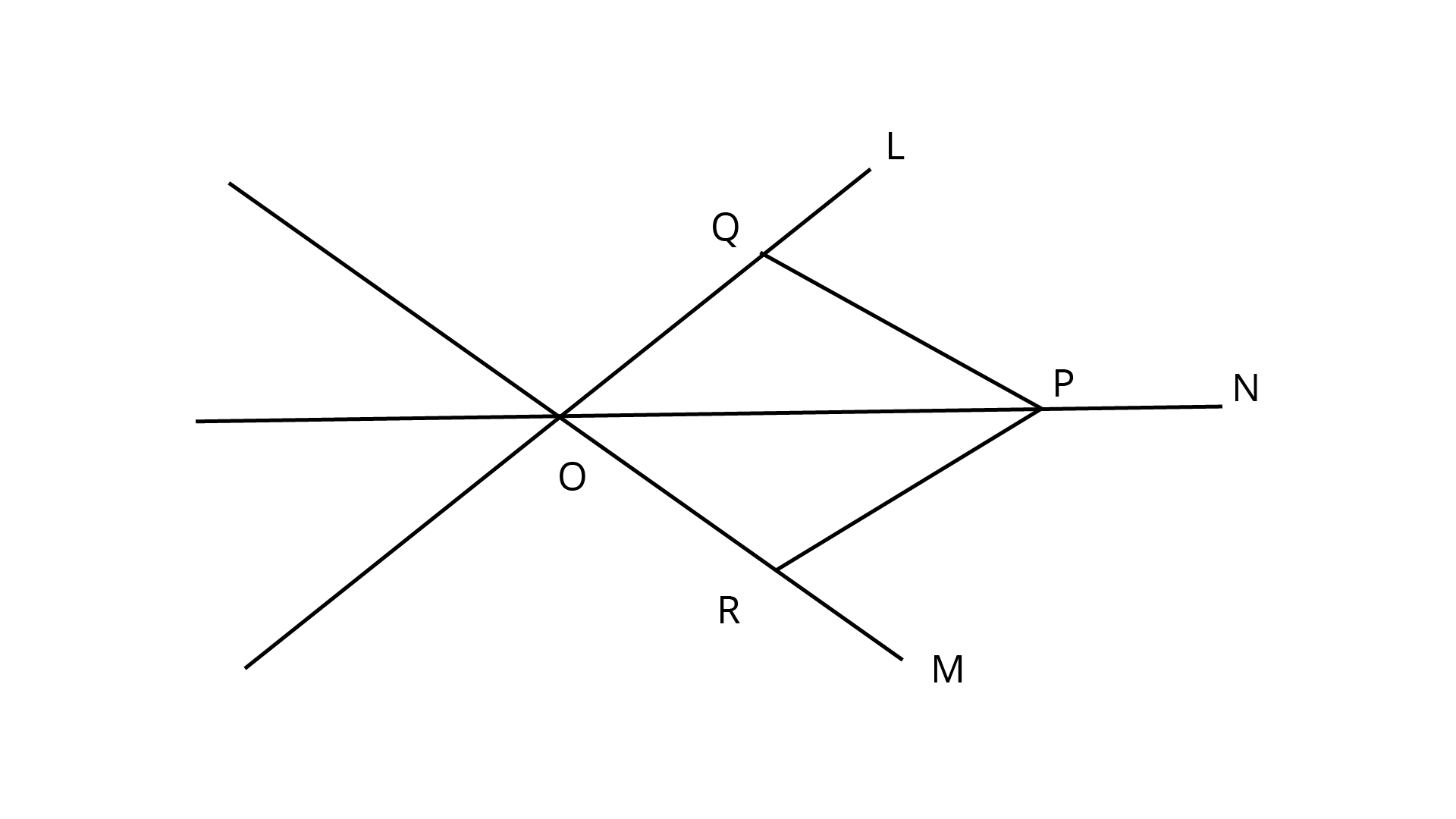
So, by SAS criterion of congruence, we have
We know that:
The bisector divides a given angle into two angles with equal measures.
So,
Hence, proved.
16. Line segment joining the mid-points
Ans: Line segment joining the mid-points
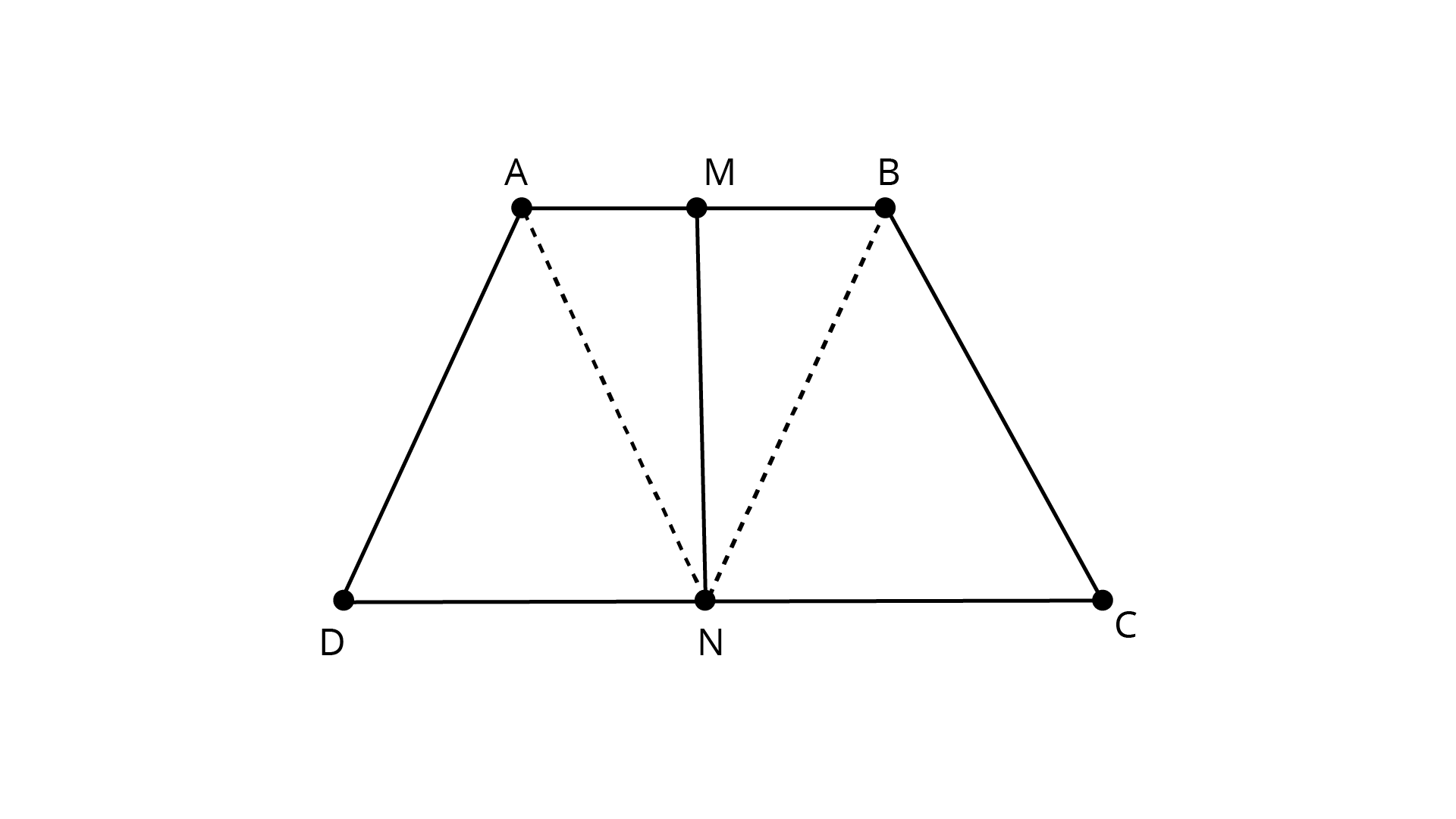
Draw
Consider
We know that M is the midpoint of the line
Therefore,
From the figure it is given that
MN is common i.e.
By SAS criterion of congruence
Subtracting LHS and RHS by
So we get
Now, consider
We know that
By SAS criterion of congruence
Therefore, it is proved that
17.
Ans:
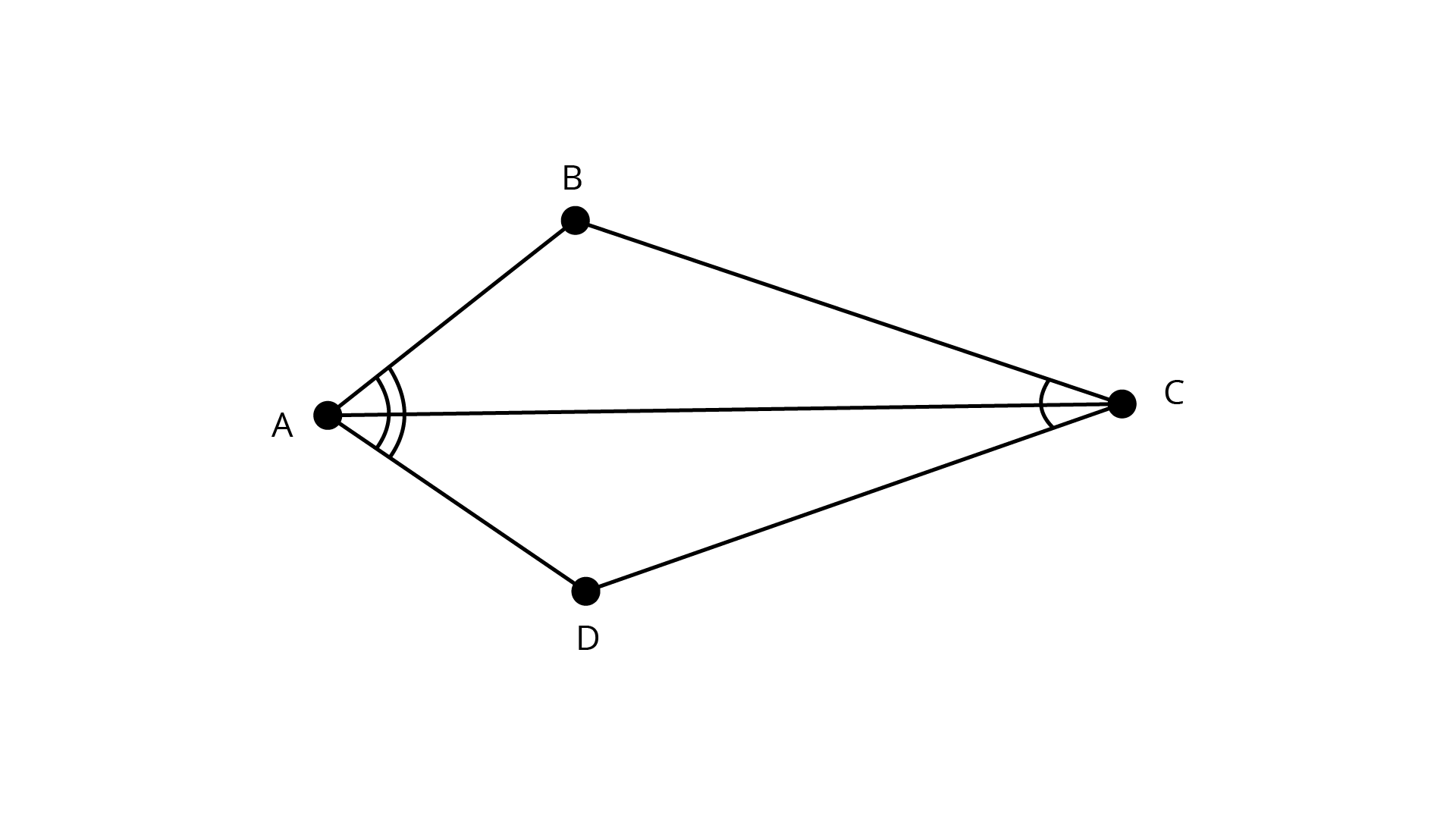
Ans: In
18.
Ans:
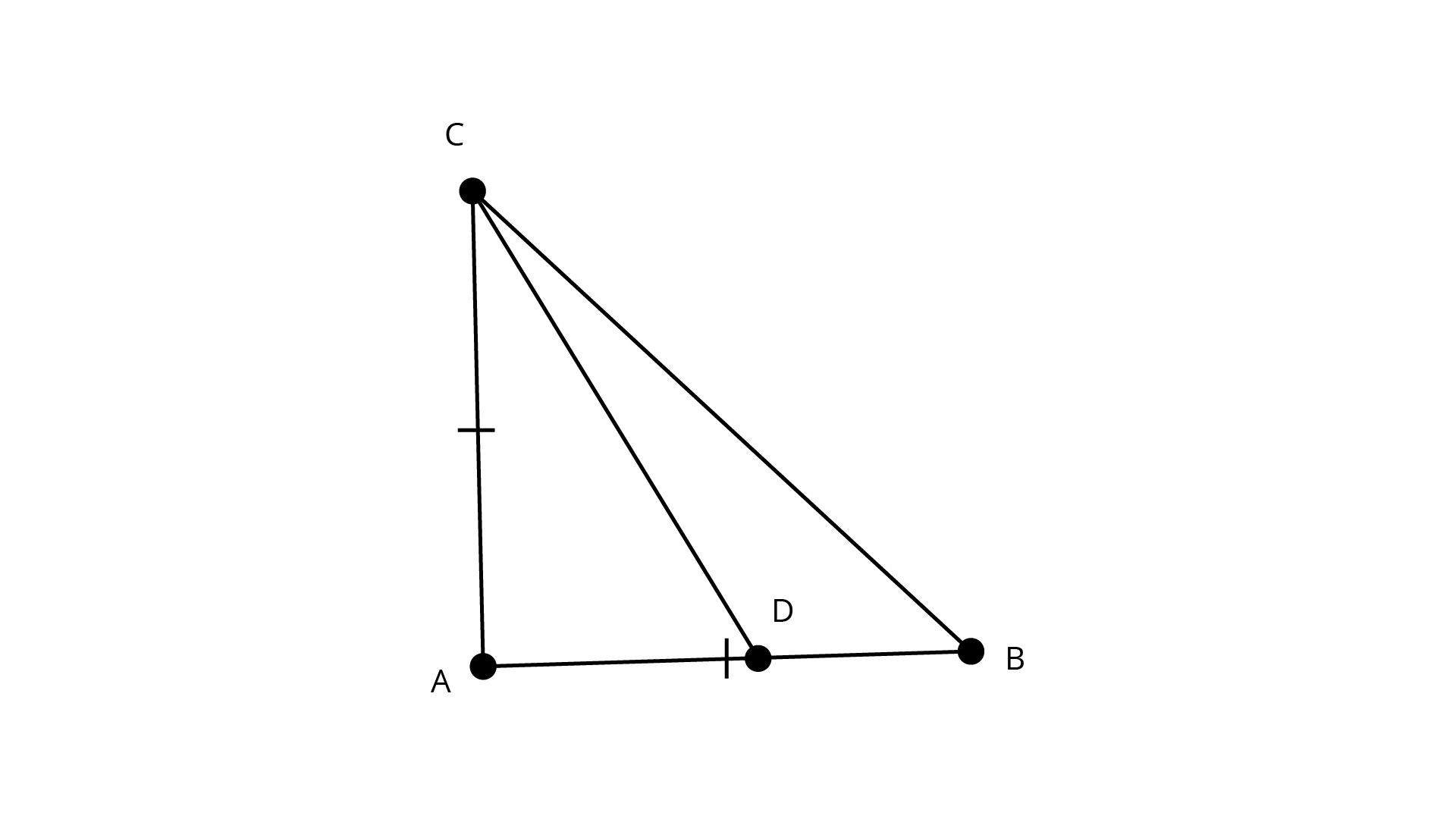
Let
We know that:
Angle bisector theorem: An angle bisector of a triangle divides the opposite side into two segments that are proportional to the other two sides.
But, we know
Hence proved.
19. AB and CD are the smallest and largest sides of a quadrilateral
Ans:
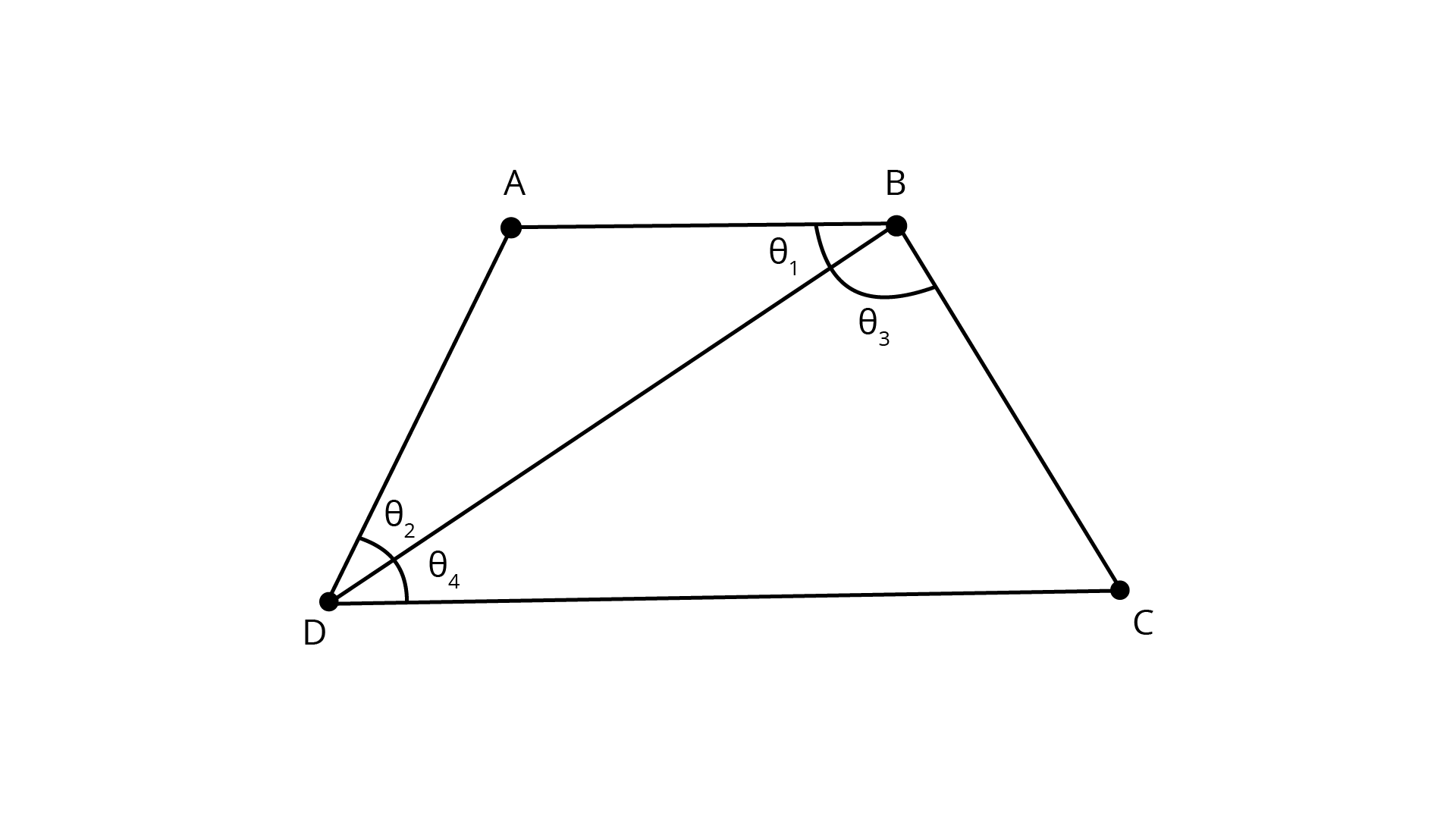
Here,
Join the diagonal
Label the angles as
Now in
Similarly in
Adding equations (1) and (2), we get:
Hence,
20. Prove that in a triangle, other than an equilateral triangle, angle opposite the longest side is greater than
Ans:
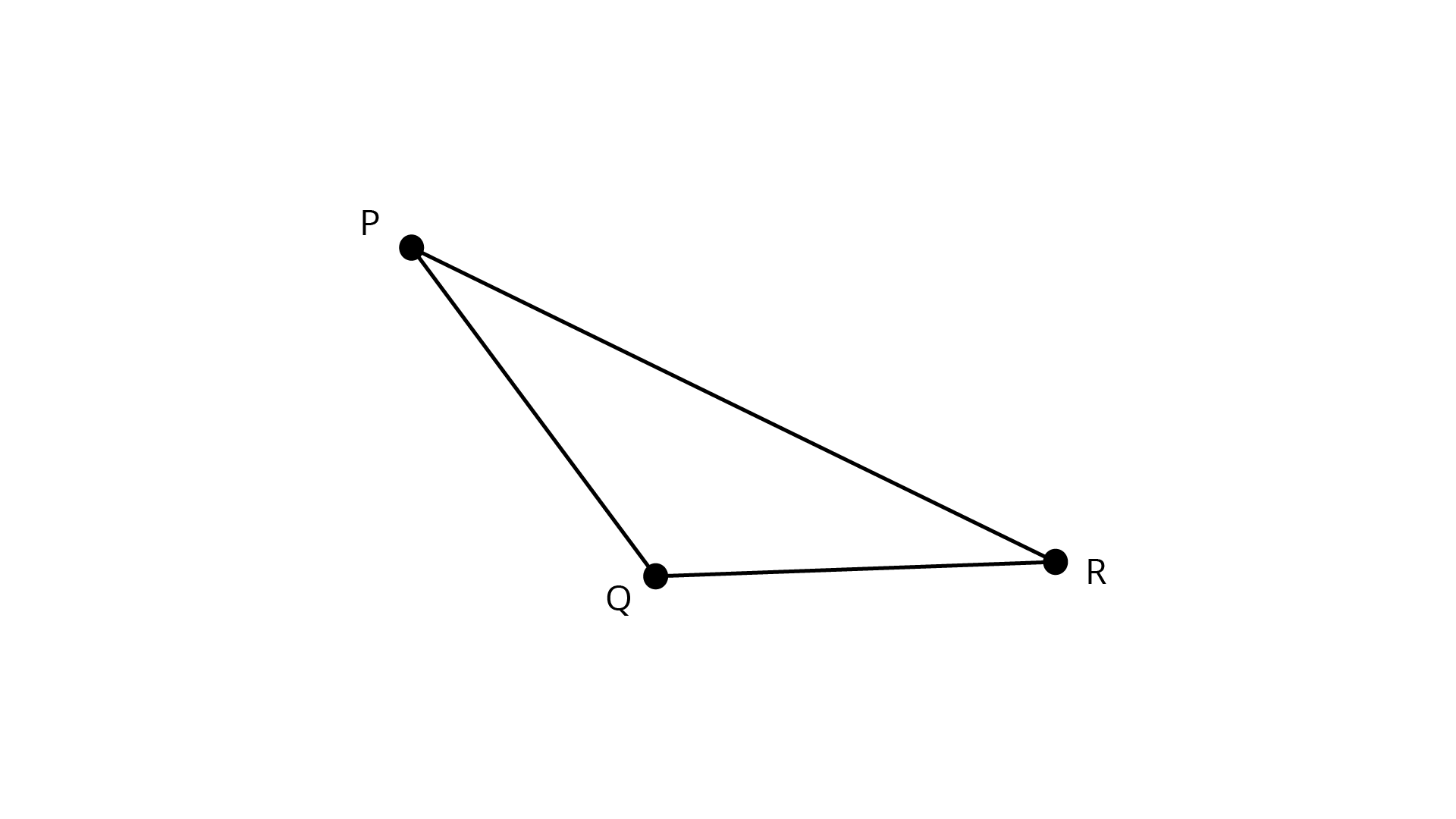
We know that:
The angle opposite greater side is greater.
Also,
By adding both the equations
Therefore,
Adding
So we get
Rewrite the terms, we get:
Hence, in a triangle, other than an equilateral triangle, the angle opposite the longest side is greater
21. ABCD is quadrilateral such that AB = AD and CB = CD. Prove that
Ans: ABCD is quadrilateral such that
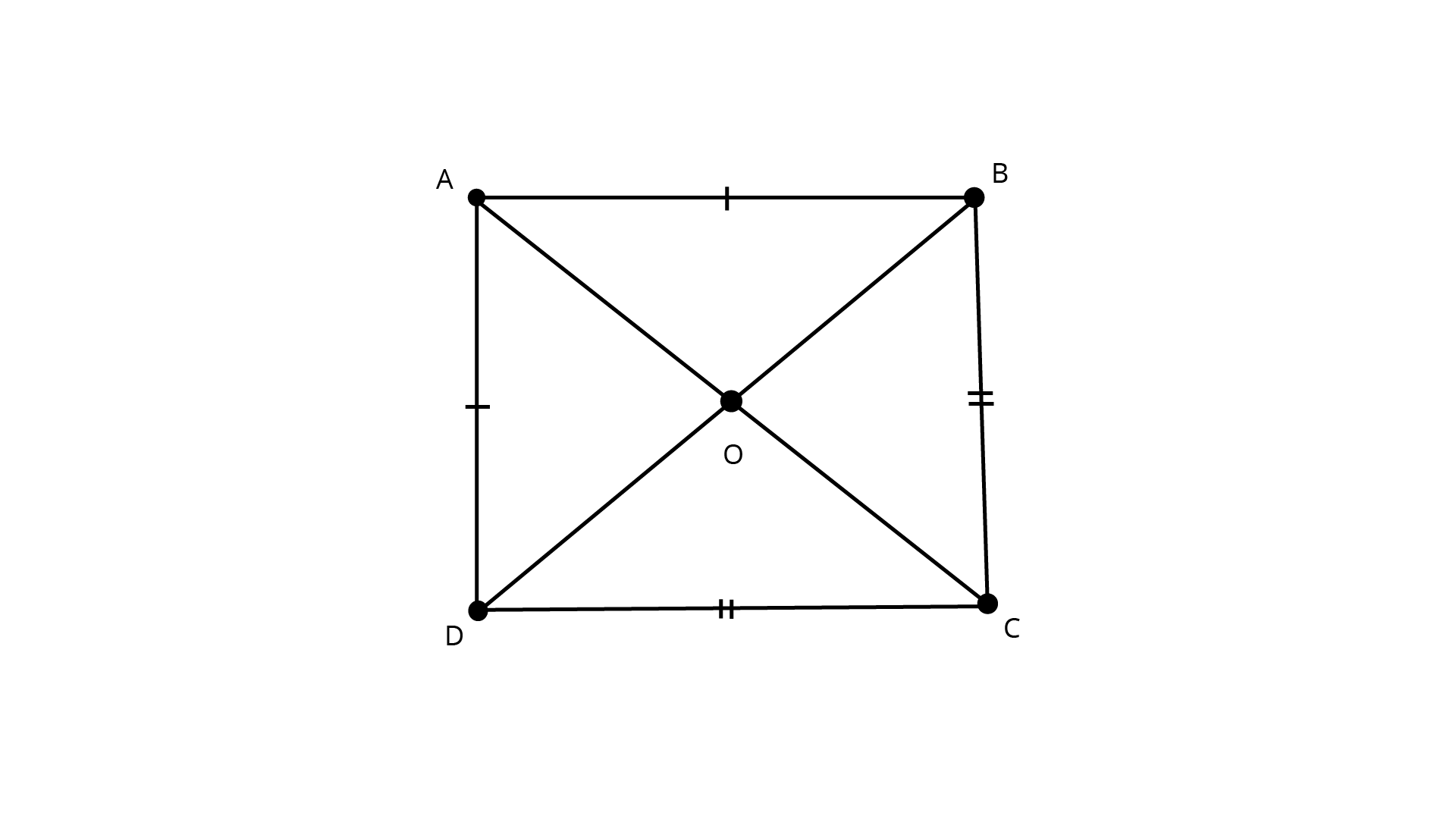
In
NCERT Exemplar Class 9 Maths Solutions for Chapter 7 Talks About:
The part starts with the depiction of the triangles, which includes the properties of triangles.
Congruence triangles form when three sides of two triangles are identical to fit into one another.
The SAS Congruence rule states that two triangles are congruent, provided that the point in every triangle is equivalent, and the sides holding these points are likewise equivalent.
Yet, the ASA congruence rule is not the same as that of SAS Congruence.
The ASA Congruence rule states that two triangles are consistent in case two points of every triangle are equivalent and the normal side holding them is additionally equivalent.
No two rules of congruence triangles are similar, so various conditions are utilized to solve the problem.
The chapter finishes with different theorems used to take care of various triangle problems.
Conclusion
The study material can be extra valuable to students stalling out at a specific sum since we esteem time to the most and believe that students should limit the wastage of time. Download maths NCERT solutions class 9 prepared by a master teacher at Vedantu.
FAQs on NCERT Exemplar for Class 9 Maths Chapter 7 - Triangles - Free PDF Download
1. What are Triangles and their types in Chapter 7 of NCERT Maths Class 9?
Any closed figure that comprises three sides is known as a triangle. It comprises three sides, three points just as three vertices.
Types of Triangles: There are around three kinds of triangles that depend on the length of the sides.
Scalene Triangle: The length of all sides of the scalene triangle is unique.
Equilateral Triangle: This triangle has two equivalent sides.
Equilateral Triangle: A triangle that has three equivalent sides is known as the equilateral triangle.
2. What are congruent figures and congruent triangles with their criteria in Class 9 maths chapter 7?
Congruent Figures: Mathematical figures that have a similar size, just as shape, are known as congruent. To confirm on the off chance that plain figures are consistent or not, you can put them on each other and you can check in case they match.
Any two circles are known to be congruent if they have a similar radius.
Any two squares are known to be congruent if they have equivalent sides.
Rules for Congruence of Triangles
The various rules for the congruent angles are:
SAS (side-angle side)
ASA (angle side-angle)
AAS (angle side)
SSS (side-side-side)
RHS (right angle hypotenuse-side)
3. How to study NCERT Class 9 maths to prepare for boards effectively?
The NCERT answers for class 9 maths has consistently the inclination of toppers in schools. We, at Vedantu, guarantee top-grade study material to our students. Students can likewise track down the main questions in our NCERT answers for class 9 maths which could be useful in scoring the highest marks. We also give students a procedure that would assist them with scoring the greatest marks in their assessments.
Since maths has a wide prospectus, we furnish students with tips and tricks to address tricky questions.
4. Why should we use Vedantu to prepare for Class 9 Maths Chapter 7?
Vedantu is an organization that empowers you to revise the NCERT Exemplar Class 9 Maths parts with the assistance of the best study material and direct review notes. Our experts give answers for each of the problems referenced in NCERT Exemplar Class 9 Maths Chapter 7. Vedantu
Every question will be addressed concerning any point or any part and you won't need to confront any problems in tracking down the answers for the questions of the section.





































